Gaming
Indian Bike Driving 3D Cheat Codes (August 2024): Check out Full List of Cheats for this Popular Game
Published
8 months agoon
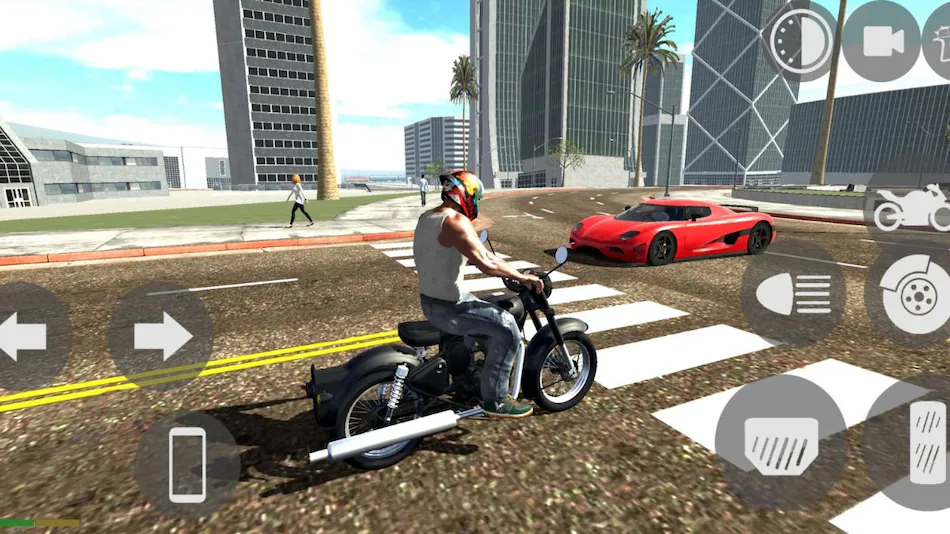
Indian Bikes Driving 3D is a popular Android game which is a spinoff of the GTA franchise. The game brings all the elements of an open-world game, just like GTA San Andreas or GTA Vice City. However, there are times when playing the game can become a bit challenging, and this is why the developers have added an option for cheat codes. These cheat codes can provide players with various advantages, such as fancy new cars and bikes and exclusive features. In this article, we will discuss a full list of Indian Bike Driving 3D cheat codes that can help you enhance your gaming experience. So, without further ado, let’s get started.
Latest Indian Bike Driving 3D Cheat Codes (August 2024)
The game developers regularly update the cheat codes for the Idnain Bikes Driving 3D game. Check out the latest cheat codes of the game below:
- Rickshaw – 8370
- GTR – 3005
- Boat – 3001
- Thar – 9191
- Velociraptor – 50
- T-rex – 51
- Spino – 52
- Brachiosaurus – 53
Indian Bike Driving 3D Bikes Cheat Codes (August 2024)
Indian Bike Driving 3D game is incomplete without using these codes. Check out the full list of bike cheat codes that you can use while playing this popular mobile game.
Action Indian Bikes Driving 3D Cheat Codes TVS Apache 4050 Yamaha VMAX 999 Yamaha FZ10 888 Tron Bike 6000 Kawasaki Ninja ZX-10R 400 Duke 1290 8888 Duke 200 7777 Yamaha R15 0015 Hero Pleasure 0000 Kawasaki Ninja H2R 3000 Pulsar RS 200 5000 Suzuki Hayabusa 7000 Hero Splendor 9000 Royal Enfield Bullet 9999 ATV 2222 New KTM 1190 KTM Duke 4215 KTM 1210 Pulsar 1211 Hero Super Splendor 6021 Ghost Raider Bike 5555 Ducati Diavel 777 Benelli TNT 666
Indian Bike Driving 3D Car Cheat Codes (August 2024)
From Bugatti Chiron to Mahindra Thar, these cheat codes will give you instant access to different cars in the game:
Action Indian Bikes Driving 3D Cheat Codes Mahindra Thar 9191 JCB 6677 Hummer Car 8880 Mahindra Bolero 3100 Toyota Supra 2244 Ford Mustang 8123 Ferrari 8811 Tank 4040 Ford Endeavour 2020 Truck 1212 Truck with trailer 01212 Fire Truck 606 Toyota Legendar 1001 Tarzen 300 Monster Truck 0 + Car cheat codes Porsche 4000 Scorpio Classic 333 Scorpio S11 444 Toyota Fortuner 1000 Rolls Royce 2000 Range Rover 6666 Bugatti Chiron 4444 Bugatti v2 800 Koeigness 900 Audi 500 Lamborghini 3333 Lamborghini v2 700 Thar Modified 9090 GTR 3005
Indian Bike Driving 3D All Cheat Codes (August 2024)
Check out the full list of cheat codes that are available for Indian Bike Driving 3D game:
Action Indian Bikes Driving 3D Cheat Codes Rickshaw 8370 Boat 3001 Velociraptor 50 T-rex 51 Spino 52 Brachiosaurus 53 JCB 6677 Jet pack 320 Jet pack mini 330 Tank 4040 Zombie 2030 Dino 5050 Infinity Health 9129 Night Mode 9 Horse 200 Plane 555 Dog 600 Cycle 1111 More NPC 12345 More Traffic Cars 54321 Fuel Tank 00 Gas Tank 0 Helicopter 8000 Super jump 1215 ultra Super jump 1216 Skyfall 1120 Slow motion 1112 Moon gravity 7112 GTR 3005
How to Use Indian Bike Driving 3D Cheat Codes?
Entering cheat codes in the game is pretty simple, and you need to follow these steps to activate your favourite Indian Bikes Driving 3D game. However, it is important to note a few things. First of all, make sure that you have enough space if you are spawning a vehicle, or else it will pile up on top of another vehicle. That said, check out these steps:
- Open the Indian Bikes Driving 3D game on your smartphone.
- Tap on the Play button, and you will enter the gameplay.
- You will find a Phone icon on the game screen at the bottom left corner.
- Tap on it, and it will give you the phone options.
- Now tap the Phone icon on the mobile to see the contact list.
- Tap the Dialpad icon on the phone screen to open the Dialer option with Numpad.
- Enter the cheat codes from the above-mentioned list and press the green call button.
- The game will load an ad first and then activate the cheat code you entered.
Frequently Asked Questions (FAQs)
What is the cheat code for jetpack in the Indian Bike Driving game?
In order to activate the jet pack, users can dial 330 on the in-game cell phone.
How to spawn a monster truck in Indian Bike Driving 3D?
Spawning a monster truck is relatively simple in the Indian Bikes Driving 3D game. All you need to do is dial 0 in the in-game cell phone and the monster truck will automatically spawn at the location.
What is the cheat code for Ghost Rider Bike in the Indian Bike Driving 3D game?
The cheat code for Ghost Rider Bike is 5555. One can use the in-game cell phone to activate this cheat code.
What is the cheat code for Splendor in Indian bike driving 3D?
There are different variations of Splendor bike in the game. One can use 9000 to activate the standard Splendor bike and 6021 for the Super Splendor bike in the game.
How many cheat codes are in an Indian Bikes Driving 3D?
There are approx. 78 cheat codes are available for the Indian Bike Driving 3D game on Android.
What is the cheat code of Bugatti Chiron in Indian bike driving?
Users can use 4444 cheat code for using Bugatti Chiron sportscar in the game.
How do you spawn a bike cheat in Indian Bike Driving 3D?
There are multiple cheat codes to spawn a bike in the Indian Bike Driving 3D game. However, the popular ones are 777 for Ducati Diavel, 666 for Benelli TNT, 5555 for Ghost Raider Bike, 7000 for Suzuki Hayabusa, 400 for Kawasaki Ninja ZX-10R, and more.
What is the Mustang cheat code in Indian Bike Driving 3D?
In order to spawn a Mustang car in the Indian Bike Driving 3D game, one need to dial 8123 from the in-game cellphone.
What is the cheat code of Ferrari?
Users can enter the 8811 cheat code to spawn a Ferrari sportscar in the game.
What is the cheat code of Rolls-Royce?
Users can enter the cheat code 2000 in order to spawn a Rolls Royce in the Indian Bike Driving 3D game.
What is the code of horse in Indian Bike 3D?
One can also spawn a horse in the game. All you need to do is dial 200 from the in-game mobile phone to activate the horse cheat code.
You may like
Entertainment
Best Games of 2023: Gadgets 360’s Favourite PC, PlayStation, Mobile, Xbox, and Nintendo Switch Games
Published
8 months agoon
August 20, 2024

2023 was an incredible year for games, with each month grabbing our attention with a defining entry — be it sequels, remakes, or highly-anticipated blockbusters. Since the Holiday season is here, we asked the folks at Gadgets 360 what their highlights were, only to be met with some truly compelling takes. One of them is an award hoarder pushing the role-playing medium forward and alarming the larger AAA gaming industry, while the other is an indie game about fishing, whose deep waters hide some Lovecraftian horrors. Then there’s a nightmarish twist on Pinocchio’s Tale, new escapades from Marvel’s web crawlers, and Link’s journey back in time to save Hyrule.
With that, here are Gadgets 360’s favourite games of the year, available across PC, Android, iOS, PlayStation 4, PlayStation 5, Nintendo Switch, Xbox One, and Xbox Series S/X. (In no particular order)
Baldur’s Gate III
A triumphant distillation of complex Dungeons & Dragons mechanics, it’s actually unreal how Larian Studios managed to immerse us into the Forgotten Realms and make fraternising with devils, deities, and the supernatural feel like the best thing ever. If you’re still whining about its tabletop origins governed by a turn-based combat style, maybe the awards haul will convince you to at least give it a fair shot. Baldur’s Gate 3 is a staggering achievement in player agency, where every decision contorts the world around you, be it landmark events, absurd dialogue options, or romantic flings with its wonderful cast of companions. Befriend a squirrel or punt it into a slobbering mash of blood and flesh, side with the goblins to lead a genocide, or woo a vampire spawn to learn about his torturous and submissive past at the behest of a manipulative master.
The top-notch voice acting and performances make it impossible to not care about your party mates’ plights — an assassin hellbent on proving herself worthy, an amnesiac cleric on a suicide mission, and a Tiefling with an engine for a heart — revealed through sprawling sub-quests and strengthening bonds, in moments that feel personal. The notion that every activity is dependent on the roll of polyhedral dice is certainly intimidating, but that’s the charm of DnD, where every step you take is equally anxiety-inducing as is rewarding. Anything could happen at any given second but that rule also applies to NPCs. Unorthodox tactics such as pushing enemies off cliffs or stabbing them from the back are as viable as facing them head-on with carefully planned attacks and spell loadouts. There’s limitless freedom in how you want to approach a situation — smooth talk your way out of fights, have sex with a bear, turn yourself into a literal wheel of cheese, or pledge allegiance with a squid-faced entity to harness godly powers.
Apologies for endlessly gushing about this game, but it’s just that good! The technical merits are one thing, but the memories I created in these gorgeous lands picking the wildest options and leading my group to comical deaths, while the soothing voice of the dungeon master graphically describes them, is something I’ll cherish for a long time. I must also commend Larian Studios for its unending post-launch support and honest communication with the community to account for pretty much every feedback. The team just went, “Oh, you want to change your character’s appearance in-game? Fine, We’ll add the feature in a future patch.” I can’t recall the last time a developer rewrote an ending just because the fans were unsatisfied, and that’s saying something! — Rahul Chettiyar
Buy: Baldur’s Gate III
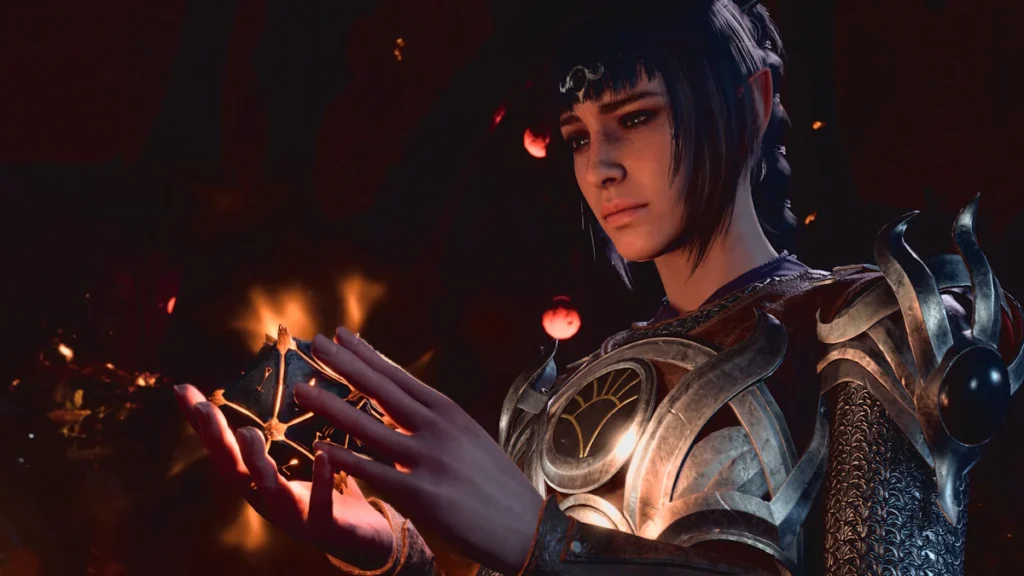
Baldur’s Gate 3 was crowned Game of the Year at The Game Awards 2023
Photo Credit: Larian Studios
Marvel’s Spider-Man 2
Insomniac Games have just about perfected the art of churning out high-production value blockbuster games that also clear a certain bar of quality when it comes to storytelling. Spider-Man 2 is no different. It pins down the soul of a Spider-Man story while maintaining an incredibly high level of polish. It takes all the good things from the previous two Spider-Man games from Insomniac and makes them just a little better. Marvel’s Spider-Man 2 does not rewrite the playbook. In many ways, it is an iterative sequel that also sticks to tried and tested open-world game design, but it attempts to curate the experience in a way that it never feels like an interminable checklist of chores.
Insomniac clearly put the emphasis on the journeys of both Peter and Miles and the people around the two Spider-Men. The web-swinging duo are the stars of the show, but side characters like MJ, Rio Morales, and Mr. Negative are portrayed with care and attention. Spider-Man 2’s villains, Lizard, Kraven, and Venom, feel fleshed out and imposing. And the expanded New York City map remains a detailed and visually stunning playground to swing around in. I found myself launching the game, even after I’d Platinumed it, just to web-swing and glide around the beautiful map.
Spider-Man 2’s combat remains elastic and fun and flexible, but it shies away from experimentation and complexity. I wish Insomniac added more depth to the fighting, instead of just throwing in a parry mechanic. Spider-Man 2’s story, too, takes the easy way out, avoiding a bolder approach and instead opting for a predictable final act. But most of the gripes are swept away by the sheer quality of the overall package. Insomniac’s Spidey sequel is visually stunning at all times, it tells a fun and engaging story, and it delivers on kinetic set-piece action moments. It’s like rewatching a good Marvel movie, where familiarity is part of the reason why you can pick it up again any time. — Manas Mitul
Buy: Spider-Man 2

The Legend of Zelda: Tears of the Kingdom
In a year packed with excellent, genre-defining games, The Legend of Zelda: Tears of the Kingdom defies categorisation. It annihilates genres to mulch and forms something entirely new from the rubble. On the surface, it’s an open-world action-adventure title with an intense focus on exploration and freedom. But when you dive into its depths, quite literally, you find it to be so much more. Tears of the Kingdom packs experiences that aren’t found in video games at all, all while being one of the greatest video games ever made.
To begin with, it throws out all the mechanical tools from Breath of the Wild right out of the window from the get-go. At first, it’s a little disorienting. But soon, the game introduces new ways to play at a measured pace, revealing new powers at Link’s disposal. When you first begin to test out the new Ultrahand ability, which lets you pick up objects in the game world and join them together to build machines, the game is careful to not overwhelm you. Your initial constructions are simple but effective. They help you cross a lake and ride a rail to reach destinations that initially seemed out of bounds. With time, Ultrahand grants you the freedom to build anything you want — a virtual Lego with unlimited blocks and unlimited imagination. You only need to go to r/HyruleEngineering to see some of the incredibly complex constructions players came up with to completely change the nature of the gameplay. From fire-spitting mechs to flying saucers, machines you build in Tears of the Kingdom are the ultimate sandbox you can experience in the medium.
No other game has surprised me as much as TotK. No other game has come even close to providing the kind of variety and freedom as TotK has. And no other game matches TotK in its commitment to creative gameplay. It’s almost as if the game hands over total control to the player, like it was a test build meant for the developers’ eyes only. Tears of the Kingdom provided me game-breaking tools and allowed me to go crazy with them. And it’s a testament to its robustness that it did not buckle under the weight of intense experimentation. And it’s not just its mechanical wonders that make it an all-time great video game. It’s the evocative music, it’s the stunning vistas and beautiful visuals, it’s the layered game world that lets you explore the skies and dive the depths, and it’s the emotional earnestness of it all that could teleport players to the first time they picked up a toy. — Manas Mitul
Buy: The Legend of Zelda: Tears of the Kingdom
Lies of P
Haters might call this a knockoff, but I think Lies of P carves its own identity in this vast pool of Soulsborne-inspired games. Sure, there are stark similarities to Bloodborne by way of the gothic atmosphere — punctuated by cobblestone streets soaked with blood and oil, fancy lamps, and piles of corpses — but it incorporates some unique mechanics to bolster its hack-and-slash gameplay. Much of this is tied to the lore, which puts you in control of the infamous lying puppet boy Pinocchio, who must unravel the secrets behind a pestilence that’s turning all machinations into frenzied monsters. Dodge-rolling through the interconnected routes of Krat and discovering shortcuts brought flashbacks from the first time I played Dark Souls Remastered — my mouth wide open in immersion as I soaked in the winding level design that tied all key locations together.
Add to that a cast of eccentric NPCs — drawn from Carlo Collodi’s works — spewing tales of a rebellious uprising, where undervalued puppets fight back against their creators, and I was sold on this dark reimagining of a children’s classic. But for most, the highlight of a good souls-like is the punishing boss battles, and oh boy, Lies of P delivers in spades by forcing you to perfect parries to the dot and memorise patterns for what feels like eternity. Understandably, this could be frustrating for newcomers and as such, the game lets you summon spirits outside the arena, in addition to adding a slew of funnily creative weaponry; from stabbing foes with an umbrella to a giant pipe wrench for some heavy damage. Regardless of what build you choose, nothing beats the dopamine hit you get upon painstakingly beating a boss — a FromSoftware staple that developer Neowiz has managed to replicate nicely.
There are some quality-of-life tweaks as well, such as any lost souls from death can be placed outside the boss arena, the ability to regenerate healing items by exerting damage, and special icons that guide you to the next step in an NPC questline. Another thing I adore about Lies of P is how almost every character serves c-nt with their stylish 19th-century France-inspired garments; some of them emanating a strong steampunkish aura that you can’t resist dressing your Pinocchio in. Unlike most RPGs, there are no stats — or shall I say ‘strings’ — attached to clothing, so you can parade around in outlandish donkey masks, top hats, to reindeer antlers, and pair them up with some formal attire without fear of being underpowered. It feels casual in all the right places.
Neowiz completely knocked it out of the park with this release, and I’m already headed to New Game+ to scratch that never-ending Bloodborne itch! — Rahul Chettiyar
Buy: Lies of P
Dredge
On the surface, Dredge is a simple game about fishing. But dive a little deeper and this little indie gem from Black Salt Games shows up to be a profound adventure about isolation, existence, and the devils that dwell in dark waters. The game starts with you, a fisherman, reaching a small coastal town in a remote archipelago. The locals help you fix up your boat and hand you a list of fish to catch in the sea. The game follows a day-night cycle, with most of the fishing done during the daytime. Nights, on the other hand, are a different affair altogether. While it’s advisable to fish during the day, some special fish only show up at night. Out in the sea, when the sun goes down, strange creatures show up and attack you. As your panic rises in the open sea, you start hallucinating and take on nightmares head on.
As you keep finding rarer fish, you sell your catch to buy upgrades for your boat that make it faster and sturdier. You also slowly get better fishing gear to catch different kinds of fish. You must also manage resources well as your boat has limited space for upgrades and equipment. Aside from your fishing adventures, you can also take up requests and side quests from people living in coastal towns. Your adventures lead you through mysteries of the sea — ghostly ships and lost messages in bottles — as you slowly piece together bits of information to unravel the story.
Low on action and heavy on atmosphere, Dredge became my go to game to play on the Nintendo Switch in bed just before sleeping. There’s a calming quality to its quiet horror and I was drawn towards its mysteries, loading up my boat night after night and heading out to sea to fish. You don’t really know what strange phenomena you may encounter on each trip. But the best part is slowly sailing back to shore after your adventure — your boat loaded with your catch for the day, your lamp flickering in the sea breeze, and the lighthouse guiding you home. — Manas Mitul
Buy: Dredge
Dave the Diver
Getting ultra-addicted to a roguelite about ocean exploration and fishing wasn’t on my bingo card this year, but here we are. Dave the Diver largely revolves around spearfishing during the day to catch the freshest bounty and managing a local sushi restaurant by night, all of which is presented in a cutesy pixelated art style that you’ll struggle to break free of. Knowing that the gameplay loop could get tiring super fast, developer Mintrocket slowly evolves the game like a Jenga tower by adding new mechanics and character arcs without making it overwhelming. In just a few weeks into your new gig as a fisherman, you’ll have run into a full-blown otaku who helps with weapon crafting, an archaeologist studying underwater mysteries, a biology research student, and an Ash Ketchum cosplayer looking to gather digital cards based on what sealife you caught. Yep, that’s a play on obsessive Pokémon card collectors.
By gradually upgrading my suit and equipment, I got strong enough to make encounters with sharks and other perilous creatures. But back on the surface, I had veered into an even greater challenge — running multiple branches of Bancho’s sushi shop and dealing with a group of relentless dolphin poachers. So, if I wasn’t hastily running around the restaurant serving dishes and pouring matcha tea for impatient customers, I was busy hiring staff and harvesting produce and rice at a nearby farm. Things started to get really intense, so I would chill out by feeding the local cat Momo every once in a while, only to soon discover that he’s got a family in the backyard. As you’d guess, I took them in.
A lot of such smaller interactions in Dave the Diver grow into entire sidequests — be it celebrity chefs challenging Bancho, talking to some mysterious sea people, or even basic fetch missions. I never got bored throughout my playthrough and was always willing to jump back in for that one extra day of fish-hunting by even setting an alarm early in the morning before work. Safe to say, I was OBSESSED… but then Baldur’s Gate 3 launched (welp). — Rahul Chettiyar
Buy: Dave the Diver
Genshin Impact
Genshin Impact is one of the most popular free-to-play, cross-platform RPG games available today. The game grew in popularity during the COVID-19 pandemic — it was launched by publisher miHoYo in 2020 — and has since been updated with several new features, regions, characters, and enemies to the game. This year, gamers were treated to a new region on the map of Teyvat — Fontaine, while regions like Sumeru and the adjoining desert were also expanded with new bosses and domains.
Earlier this year, miHoYo added a new region in the desert that is influenced by Persia with the Gavireh Lajavard update. Gamers also gained more insight into Sumeru’s Dendro Archon, and the map was opened up even further leading to another area to the north of the desert — the new region of Fontaine.
Right off the bat, you can tell that Fontaine is heavily inspired by France, from the names of characters to locations on the map. With a new steampunk aesthetic, Genshin Impact players will have to adapt gameplay to take advantage of new features and explore new regions in the game. The game also introduced Furina, the Archon in charge of the Hydro nation.
Unlike other regions in the game, the waters of Fontaine will not let you drown when you run out of stamina. In fact, you can actually swim underwater indefinitely when you are in Fontaine — your stamina bar appears blue instead of yellow. You can also “borrow” some underwater capabilities from aquatic animals, as your character’s skills do not work while swimming.
Among the more interesting areas added to the game is the Fortress of Meropide, which is a vast prison that can be explored with primary and secondary quests. The game has also added Neuvillette, Furina, Navia, Charlotte, Freminet, and Chevreuse — new characters from Fontaine that you can acquire through the game’s gacha system. — David Delima
Download: Genshin Impact
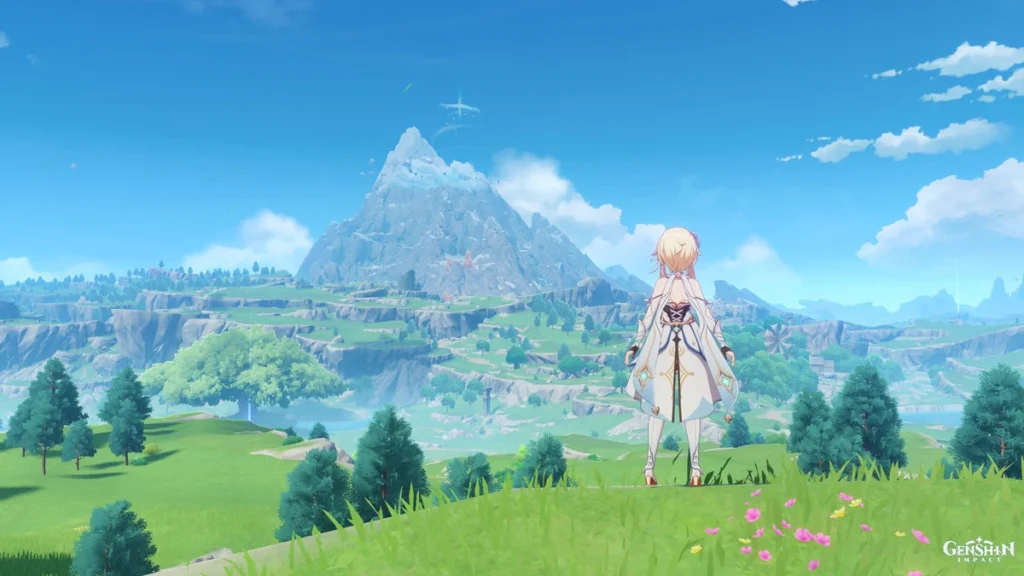
Locations are consistently updated with new enemies, wildlife, and storylines
Photo Credit: miHoYo
Stasis: Bone Totem
Dragging the revolting themes of a David Cronenberg film thousands of feet down to the ocean floor is a frightening affair for many. But for the grieving sea-faring couple Charlie and Mac, a discovery of such horrid proportions is like striking a goldmine, with the all-consuming darkness of a secret laboratory inviting them with questions and the festering stench of rotting carcasses. As a huge fan of the literary RPG Disco Elysium, I always have a soft spot for isometric games that rely on exploration and environmental storytelling to paint the larger picture. It also helps that I’ve gotten tired of the action-heavy Dead Space-esque route most sci-fi horror games take, where fear is generated from the anticipation of a jumpscare and dim lighting. While the latter is still true for Stasis: Bone Totem, the ability to see a whole room from above urges me to explore every corner and appreciate this gory universe.
One moment I’m learning about a brain implant that uploads memories to a digital afterlife upon death, and then a few hours later, I’m literally knee-deep in a pool of blood, listening to horrifying ritualistic chants from the next room. The art style is stunningly creepy, which is amplified by pulsating effects on living pieces of flesh and particulate matter floating around in the air. The meat of this game, however, is the elaborate puzzles — almost fashioned after a metroidvania wherein you’ll often revisit locations and run around in circles to slot in the new pieces. What’s more interesting is that the lead characters — Charlie, Mac, and an animatronic bear Moses — leverage their skills in breaking objects, repairs, and hacking to work together on convoluted solutions. A lot of this can feel like trial-and-error, but it always felt safe knowing that when I’m stuck, I can simply move the items over to the next character and mess about to see what happens.
Scattered around the underwater facility are datapads, yielding unique side stories about the crude experiments and other bizarre acts committed by scientists before your arrival. All of it is detailed in a neat order — almost like a diary — so it’s easy to decipher the spine-chilling events and connect the dots to the larger tragedy at hand. That said, I do wish that logs were narrated (one robotic voice) so I could just continue playing the game as I listened to them. Besides that, Stasis: Bone Totem is a fantastic indie gem that I simply can’t stop recommending to my friends! — Rahul Chettiyar
Buy: Stasis: Bone Totem
Final Fantasy XVI
I had never experienced a Final Fantasy game before Final Fantasy XVI, so I dived into the franchise with a blank slate, not really knowing what to expect aside from some of the recurring themes the series is known for. What I got was a sweeping adventure with deep and engaging lore, an emotional story with betrayal and revenge at its heart, and one of the best combat systems in video games all year. FFXVI falters where most modern RPGs excel — it has lacklustre exploration; it has underwhelming loot and character customisation; and it barely offers any meaningful choices. But it puts all its eggs in the basket of its incredibly polished and fun combat. FFXVI boss fights are some of the most epic in video games this year.
FFXVI has an interesting story to tell, too. I found myself wrapped up in the intricacies and politics of Valisthea, the palace intrigue that interjected the action, and shifting loyalties of the land’s kingdoms. As you take on Clive’s journey, you meet friends and foes and form your own group of companions. Clive, who has been on a path of revenge, takes on a higher cause and becomes a leader of the oppressed. The sprawling story, which takes cues from Game of Thrones, spans decades and involves a host of different players at different points. The information overload could easily become overwhelming, but the Active Time Lore system, which brings up contextual information and character bios in real-time with the press of a button, keeps things palatable.
If you’ve never played a Final Fantasy title, FFXVI is an ideal and accessible starting point. Each Final Fantasy game resets the setting and characters, so you can dive in without worrying about previous titles. FFXVI doesn’t quite match up to the diverse offerings of modern RPGs, but the game’s fascinating setting, its excellent combat and monolithic Eikon battles, and its evocative musical score make it one of the best narrative-action titles released this year. — Manas Mitul
Buy: Final Fantasy XVI

Final Fantasy XVI puts you in the shoes of a brooding, likeable protagonist, Clive Rosfield
Photo Credit: Square Enix
Entertainment
Asus ROG Ally X Hands-on Impressions: Upgrades That Matter
Published
8 months agoon
August 20, 2024
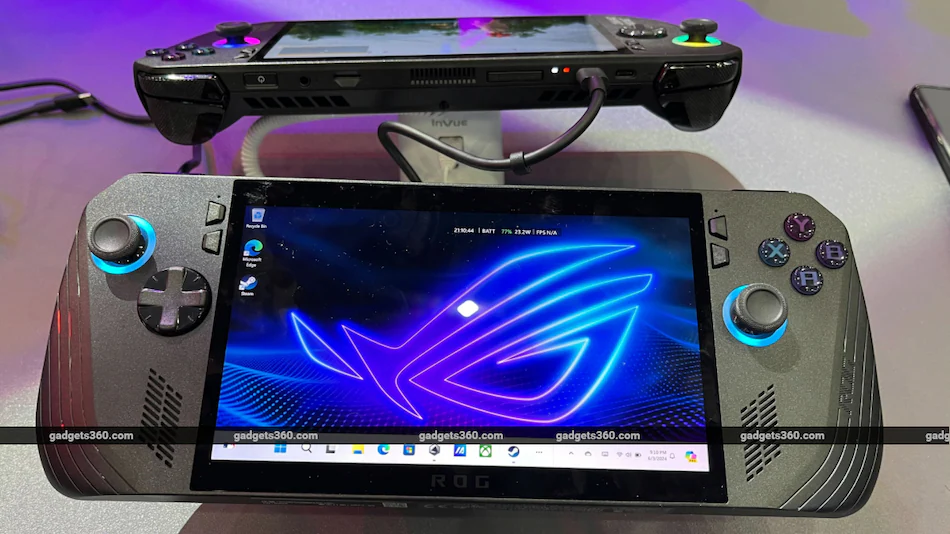
When the Asus ROG Ally made its debut last year, it came with certain caveats. Yes, the gaming performance was solid, but the same didn’t apply to its battery life. And while the design and build quality held up to the competition, the thermal management did not. Asus’ handheld was surely a positive entry in the segment, but it came with crucial limitations that held it back from truly challenging the heavyweights. The ROG Ally could be an alternative to the Steam Deck, but never a replacement.
Fast forward a year, and Asus is back with another gaming handheld. The Asus ROG Ally X made its debut on June 2, just ahead of Computex Taipei. The portable gaming PC attempts to address the apparent flaws of the ROG Ally with tweaks and improvements across the board. The upgrades are small, but meaningful — the handheld’s battery capacity (80Whr) significantly improves on the original’s (40Whr), it packs more memory and more storage, and is said to have better cooling than the ROG Ally. There are other changes, as well, that make for a better handheld altogether.
Two days after its launch, the Asus ROG Ally X was present at the company’s booth on the Computex floor, where Gadgets 360 got the chance to try it out for an extended period of time. It’s hard to tell how the spec bump translates into real-world performance improvements from an early and brief hands-on experience, but first impressions can go a long way. The first thing that strikes you is the new colourway that makes the ROG Ally X — well, ironically — less striking. Now in jet black, the handheld gaming PC blends with the competition (the Steam Deck, MSI Claw A1M, Lenovo Legion Go — all come in black). The original Ally’s white colourway, while more prone to dirt and grime from your hands, did convey a distinct aesthetic.
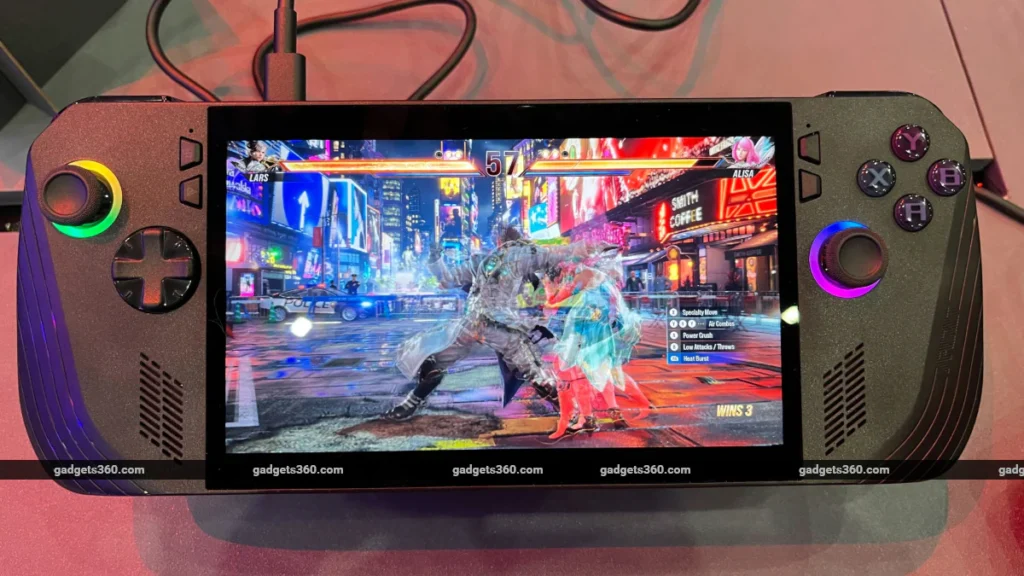
The ROG Ally X retains the design of its predecessor and there’s little that’s changed on the front. It offers the same 7-inch full-HD (1920 x 1080 pixels) IPS touchscreen display that refreshes at the rate of 120Hz and goes up to 500 nits of brightness. The D-pad sports a more pronounced design and a new matte finish — Asus says it has a more tactile feel, as well. The face buttons are the same, too, but the company claims they are “springier.” The Taiwanese firm has fitted the handheld with new joystick modules that are said to provide more control while aiming, a smoother feel and improved durability.
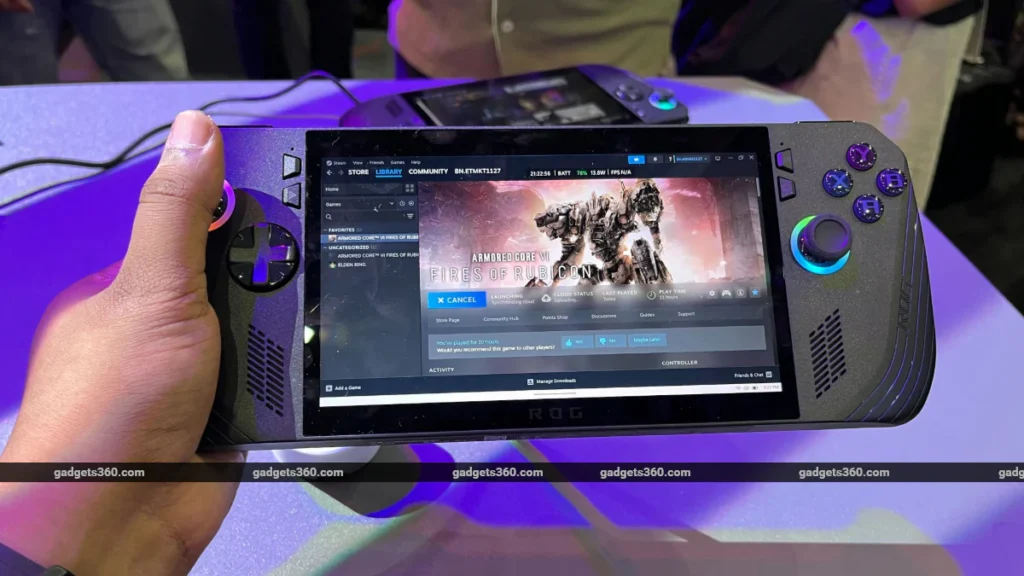
Bigger changes are, however, under the hood. The ROG Ally with its 40Whr-rated battery couldn’t last two hours while playing demanding PC titles. Its under-powered battery was perhaps the biggest flaw and prevented it from becoming a truly portable handheld. The ROG Ally X addresses that shortcoming with an 80Whr battery that should result in longer gaming sessions. Playtime numbers are not clear yet and Asus hasn’t provided details on battery performance, but these should be clear once the device is in for a detailed review.
The handheld’s memory gets an upgrade, too, the ROG Ally X gets more RAM — 24GB at faster speeds of 7500MHz, out of which 16GB will be allocated for the system and 8GB for the GPU. This should likely result in better gaming performance in general, but don’t expect a big improvement as the Ally X still runs on AMD’s Ryzen Z1 Extreme Zen 4 platform with RDNA 3 graphics, same as the 2023 ROG Ally. The new handheld also comes with bigger storage out-of-the-box — 1TB SSD with support for the more common M.2 2280-sized drives, instead of the 2230 standard used in the ROG Ally.
Ports have been repositioned, as well, and Asus has ditched its proprietary XG Mobile port for two USB Type-C ports, one of which supports Thunderbolt 4. Asus also claims it has redesigned the cooling system on the handheld. The ROG Ally X uses smaller fans, which make space for the bigger battery, but result in better airflow — about 24 percent more than the previous model, according to Asus. This is also claimed to bring down the touchscreen temperature by up to 6 degree Celcius. The 2023 model did struggle with heat management, so this is a welcome change. But real-world thermal performance would only be clearer upon extended use.
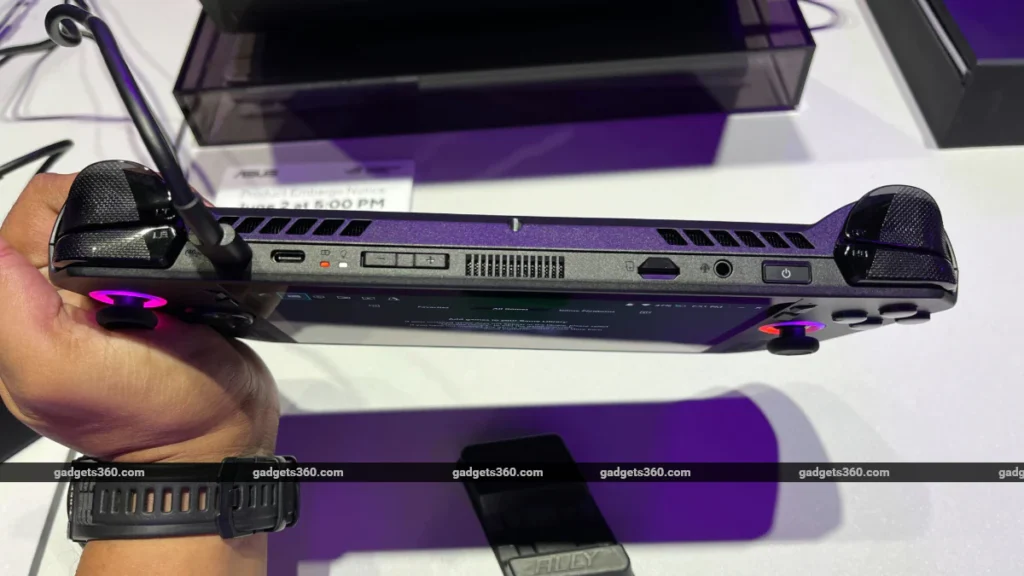
The one big thing that held back the Asus ROG Ally and works against the new model as well is the OS. The ROG Ally X comes with Windows 11, which while offering flexibility and versatility, remains an unwieldy and unintuitive touch interface for touchscreens. Sure, it allows the handheld to work like a pocket PC with attached controllers, but it pales in comparison to Steam Deck’s SteamOS, which brings a smoother, console-like UI. Asus has, however, packed a new version of Armoury Crate SE software this time around, which promises a more customisable interface and game library with easier navigation.
At Computex, Gadgets 360 tried out games like Armored Core VI: Fires of Rubicon, Palworld, and Tekken 8. The titles were running smoothly, and we did not notice overheating issues in the short time with the handheld. This stood in contrast to the hands-on experience with the Zotac Zone, another new handheld seen at Computex. Zotac’s Windows-based portable crashed while running Horizon Forbidden West and showed signs of overheating. A detailed review will shed more light on the new Ally X’s gaming and thermal performance, but considering the improvements brought to an already decent handheld, the ROG Ally X could become the easiest to recommend among its Windows-based peers.
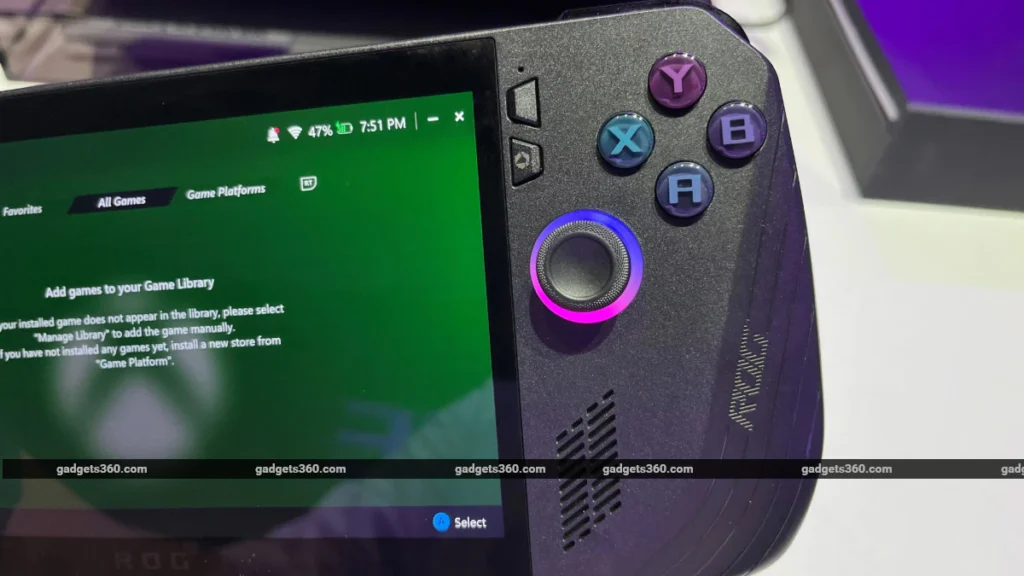
The upgrades, however, also come at a cost. The Asus ROG Ally X costs $799 (roughly Rs. 66,700), up a $100 from the Z1 Extreme version of the 2023 model. India pricing should be available closer to launch here, which Asus has said should happen later this year. And while all the upgrades bring meaningful improvements, an OLED screen, too, would have been a nice addition. But, taking the price point into consideration, it seems Asus has made all the right choices for a mid-gen refresh of its handheld. The verdict can wait until a detailed review, but the ROG Ally X left us impressed in our hands-on time with the handheld. It might not be a true successor to the 2023 model, but it looks like a success.
Disclosure: Asus sponsored the correspondent’s flights and hotel for the event in Taipei.
Entertainment
Star Wars Outlaws, Black Myth: Wukong, Concord and More: The Biggest Game Launches of August
Published
8 months agoon
August 20, 2024

August is shaping up to be a busy month for video game releases, with games — big and small — from different genres making their debut in the coming weeks. The month will see the launch of two of the most anticipated games of the year: Game Science’s action-RPG Black Myth: Wukong and Ubisoft’s action-adventure title Star Wars Outlaws. While Black Myth: Wukong brings Soulslike combat in a Chinese mythological setting, Star Wars Outlaws lets players become a bounty hunter on the run in the galaxy.
Besides the two triple-A titles, August also sees a selection of diverse smaller games releasing. Thank Goodness You’re Here!, an indie comedy adventure game developed by a two-person team, is releasing August 1; PS5 and PC exclusive Concord, a first-person online hero shooter, comes out August 23; and Dustborn, a narrative-driven action-adventure title that puts players on a colourful road trip, comes out later in the month on August 20.
There are many other games coming this month that will appeal to fans of different genres. Here, we’ll look at some of the most interesting releases in August and run through our picks for the games to look out for this month across PC, PlayStation, Xbox and Nintendo Switch consoles.
Thank Goodness You’re Here!
When: August 1
Where: PC, PS4, PS5, Nintendo Switch
Made by Coal Supper, a two-person studio, Thank Goodness You’re Here! Instantly grabs your attention with its cute, cartoony art style. The indie comedy adventure title lets players don the shoes of a travelling salesman and take on odd requests and quests for the townsfolk of Barnsworth. Set in Northern England, the game leans heavily on Yorkshire humour and its vibrant art style.
You’ll meet and get to know different characters, take on strange tasks and go on a surreal adventure. Thank Goodness You’re Here! launches on Mac, Windows (via both Steam and Epic Games Store), PS4 and PS5 on August 1.
Entertainment
Senua’s Saga: Hellblade II Review: Ninja Theory’s Flawed, but Uncompromising Sequel Is a Cinematic Achievement
Published
8 months agoon
August 20, 2024

When I booted up Senua’s Saga: Hellblade II for the first time, it began with an in-game cinematic, with the eponymous protagonist out at sea. Warrior Senua has willingly allowed herself to be taken captive by Northmen slavers and hopes to cross the sea and reach Iceland, the home of the Norse slavers, to free her people. Her plan is interrupted, however, when the ship meets a violent storm and is torn to shreds, throwing everyone overboard. Senua survives, barely, washed up on a rocky shore, and decides to look for other survivors along the coast.
Here’s when the game first hands control to the player, but it’s not immediately apparent. It took me a second or two to realise that Senua was awaiting my input. Usually, when video games transition from cutscene to gameplay, the aspect ratio changes from cinematic formats like 1.85:1 widescreen or an anamorphic 2.39:1 widescreen to 16:9, which matches most high-definition monitors and televisions today, thus giving a full-screen image without any letterboxing or pillarboxing.
But here, the black bars on top and bottom of the screen persisted, even when I was in full control of Senua. Maybe a glitch, I thought. Or perhaps I could head to settings and find an option to turn off the letterboxing? But no. As I soon found out, the game camera in Senua’s Saga: Hellblade II is an anamorphic lens with a 2.39:1 aspect ratio, which means developers Ninja Theory intended the game to be played in the cinematic format, with letterboxing on most average displays.

This information annoyed me a little, but it also left me with admiration for the studio’s commitment to a particular aesthetic and vision. And I think that mixed sentiment sums up the entire Senua’s Saga: Hellblade II experience, too. In its unwavering march towards what it tries to be — a cinematic, narrative driven, interactive featurette, it largely ignores what it is — a video game. As the former, Hellblade II is stunning. It’s an intense and evocative tale about confronting demons — both within and without — performed, shot and presented at a level of immersion and fidelity yet unseen in the medium. As the latter, its’ a short, shallow and repetitive tech demo that’s interested less in engaging and more in enthralling. At the end, Hellblade 2 falls somewhere in the middle — stunning to look at, but shy of inviting you to do more than just look.
Senua’s Saga excels at telling its story. For someone who jumped into the sequel without playing the first game, Hellblade: Senua’s Sacrifice, Hellblade 2 thankfully begins with a cinematic recap that not only catches you up to speed, but also sets the tone of the narrative. Senua washes up on Icelandic shore, in search of her people and the Norseman slavers who took them. Battered and bruised, she walks along the rocky coastline in search of other survivors from the shipwreck, before she runs into the slave master, Thórgestr. A gruelling sword fight ensues, but Senua overpowers the slaver, binds him and directs him to take her to his settlement.
From there on, true to its title, Hellblade 2 becomes Senua’s saga as she explores the desolate landscape, walking through ruined settlements, fighting off draugars and finding other allies along the way. She learns of giants who’ve reached Midgard from their home Jötunheimr after a volcanic eruption tore open the walls between the two Realms. Without giving much away, the giant encounters in the game are truly sensational and deliver on both spectacle and story.

Senua washes up on a rocky Icelandic shore in the opening section of the game
Hellblade 2 eschews traditional video game narrative beats and tropes in favour of telling a more complex and clouded tale about guilt, confrontation and the powers that corrupt people to the point where they can become unrecognisable. The story is also served by the shorter runtime; if you don’t dilly-dally about, you could see the ending in under seven hours. That might leave some, expecting more milage from their game, underwhelmed. But I can’t imagine Hellblade 2 as a 15 to 20-hour title full of things to do. Its tight focus keeps the emphasis on the story, so that the weight of the themes it is trying to explore through Senua’s experiences land as impactfully as intended.
You also experience the narrative through the chaotic mind of Senua. She suffers from severe psychosis, a mental health disorder that can distort reality and bend perception. Senua struggles with hallucinations and delusions, not knowing if she can trust her own instincts and experiences. The game manifests her battle with her inner demons in sensitive and effective ways, giving the constant push and pull in her mind a literal voice. Senua is haunted by the pair of voices in her head, called the Furies, that constantly talk, asses her situation, disparage her, and even push her to keep going. More than the people around her, the voices are Senua’s eternal companions, for better or for worse. You constantly hear them whispering, “you will fail,” “get up and fight,” “you can’t win,” and they become your internal monologue.

Hellblade 2 portrays Senua’s psychosis with sensitivity and authenticity
Photo Credit: Ninja Theory
Hellblade 2 also excels in delivering the experience of living with voices in your head. The incessant auditory back and forth in Senua’s mind, in effect becomes battling dialogue in your head, too. Developers Ninja Theory implemented binaural audio to push a lush, 3D soundscape directly to the player’s ears, promising an authentic portrayal of psychosis. The Furies become a constant narrator of your experiences in the game, breaking down the cards Senua has been dealt at any given moment, questioning every possibility, but ultimately deferring to Senua (and you, the player) to take the right call. Consequently, headphones are an unmissable requirement to experience the game as intended. Wearing a decent pair of spatial audio-enabled headphones and playing the game at night was one of the most immersive gaming experiences I’ve had in a long time.
The game’s technical achievements don’t just stop at audio. Senua’s Saga: Hellblade II is, simply put, one of the best-looking games ever made. Built on Unreal Engine 5, the game pushes the visual boundaries of the medium to a realm of cinematic photorealism perhaps not yet seen in the medium, not even in The Last of Us Part II or Uncharted 4. The game’s characters not only look like real people, they move like the living, too. Faces, skin, eyes, hair, imperfections are all highly detailed and lifelike. Visually, Hellblade 2 is always stunning, but never pleasing to look at. The world is grey and grim, and the opening section of the game is drenched in torrential rain. But when the clouds part, the Norse lands are washed in resplendent, golden sunshine.
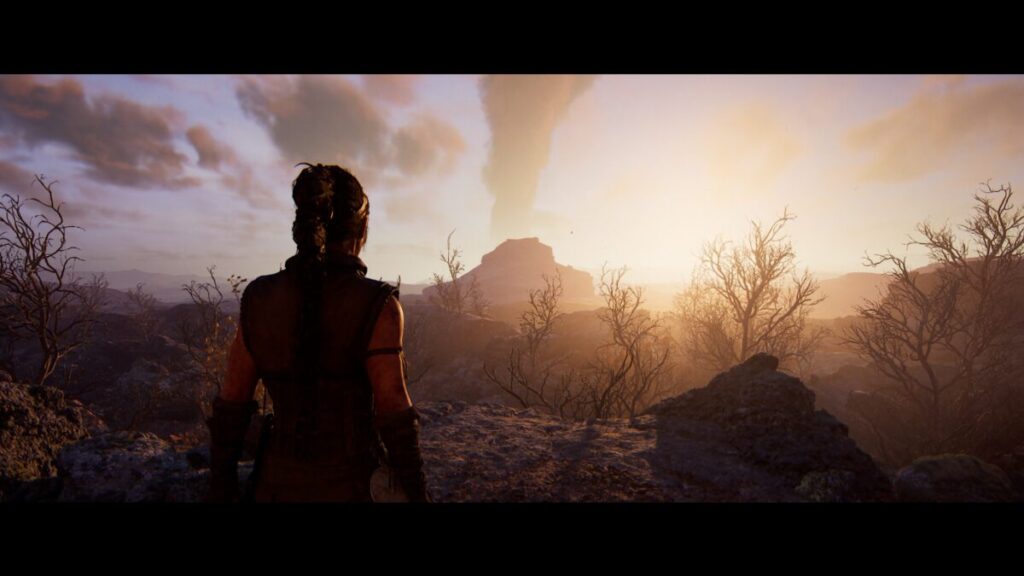
Hellblade 2 features industry-defining visuals
Photo Credit: Ninja Theory/ Screenshot – Manas Mitul
As you walk through the coarse terrain, meet other people, and explore scattered settlements, you see how the game world evokes a specific visual motif. The desolation of the landscape matches Senua’s loneliness and broken homes that dot the expanse speak of her inner ruin. With the anamorphic widescreen aspect ratio, Hellblade 2 often evokes a cold, miserable Western, with Senua its unflinching hero on an unrelenting journey. The game’s incredible visuals are complimented by excellent voice work from all actors. Melina Juergens as Senua is raw and evocative and conveys the strength of the character through the depths of her psychosis. I wouldn’t be surprised if she picked up all of the year-end awards for her work on the game.
The graphical achievements of Hellblade 2, however, hinge on the system you play it on. The game is one of the most demanding titles on PC right now and its high-end visuals demand a high-end PC for the best results. I played the game on an HP Omen 16-xf0060AX, provided by HP for the purpose of this review. And even with an Nvidia GeForce RTX 4060 and AMD Ryzen 7 7840HS, I could not get consistent 60fps performance at 1080p resolution, even with DLSS frame generation on. I tweaked and tinkered with graphical options, settling for custom settings somewhere between Medium and High, to get a reliable framerate that fluctuated between 50-60fps.
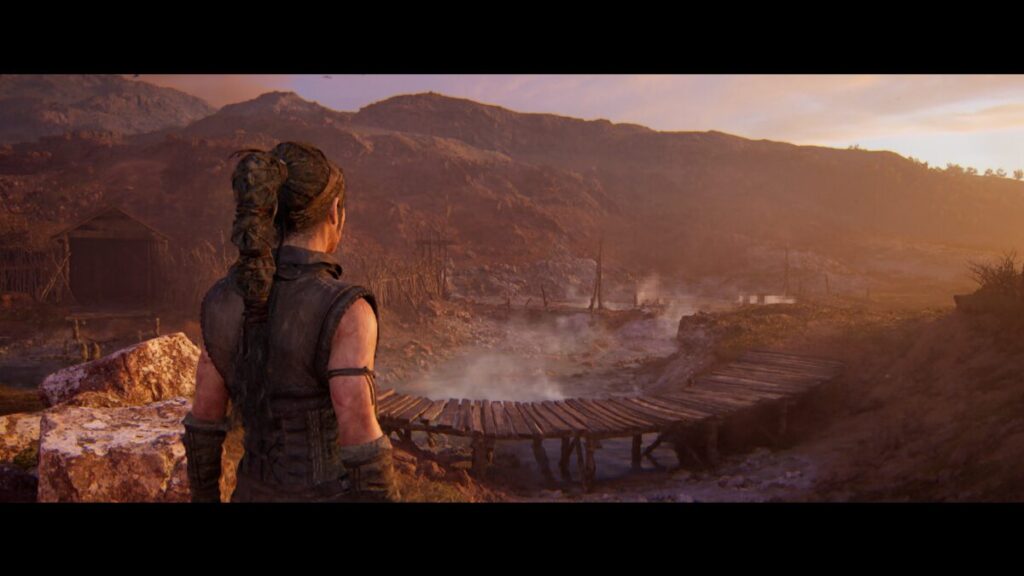
Senua keeps marching on as she battles her psychosis
Photo Credit: Ninja Theory/ Screenshot – Manas Mitul
What works to the game’s advantage, however, is that it lends itself to lower framerates closer to the film medium. An action-heavy title would be distracting to play at 30 or 40fps, but Senua’s Saga delivers a perfectly enjoyable experience around that mark. To experience the game in all its 4K graphical glory, however, would require a monster PC. Anything else would require you to make some compromises. But these are dwarfed in the face of the game’s monolithic ambition and its singular narrative experience.
Senua’s Saga: Hellblade II reviewed on HP Omen 16
Processor: AMD Ryzen 7 7840HS.
Graphics: Nvidia GeForce RTX 4060 laptop GPU (8GB GDDR6 dedicated).
Memory: 16GB DDR5-5600 Mhz RAM.
Storage: 1TB PCIe Gen4 NVMe TLC M.2 SSD.
The thing that can become a legitimate hindrance in your enjoyment of Hellblade 2, however, is its shallow gameplay. Most of the time in the game is spent trudging through linear environments, with barely any emphasis on how you traverse the world. The game emphasises exploration but offers only a couple of meaningful ways to incentivise it. You walk off the beaten path to find Lorestangir posts that dish out lore, or spot Hidden Faces in rock formations in the environment to reveal a secret path that leads to a tree. Not including collectibles and other rewards for exploration makes sense for a game that is laser focussed on its narrative, but the Hellblade 2 experience would have been richer if it included more environment-based puzzles and traversal challengers. Without that gameplay variety, it can often end up feeling like a walking simulator.
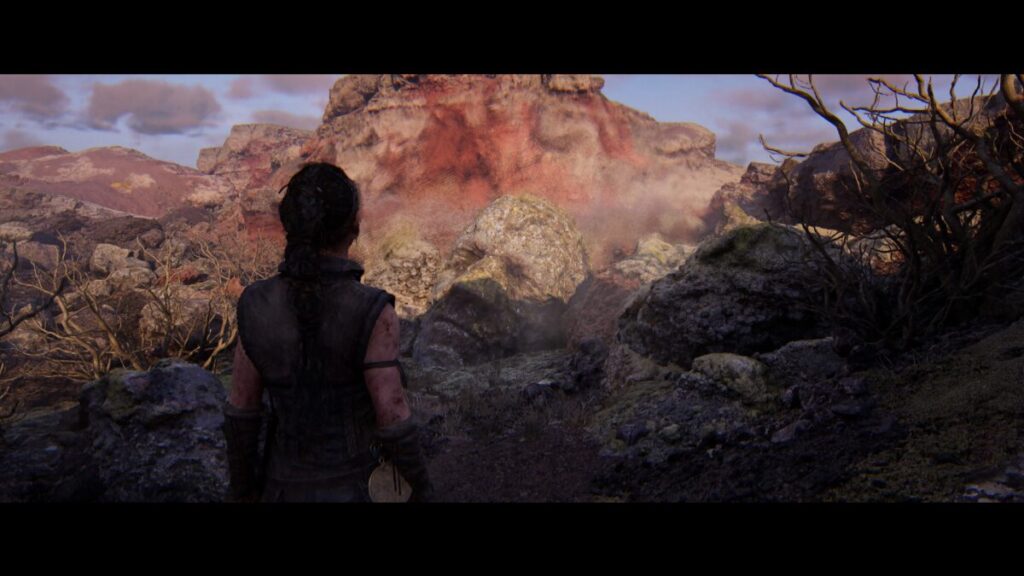
The same shallowness pervades the game’s combat as well. As Senua, you can inflict light and heavy slashes with your sword and block or dodge incoming attacks. If you block an enemy’s swing at just the right time, steel will meet steel and you’ll get a bright flash, indicating that your opponent is staggered and open for counters. Senua is also armed with a mirror, that charges up with successful attacks and parries. Once fully charged, the mirror starts glowing, and you can hit the focus button to slow down time, granting you an open window to go in on your enemy. That’s about it when it comes to combat mechanics in Hellblade 2.
While action sequences are gritty and immersive, with no HUD elements or combat indicators, the lack of complexity of moves and weapons available at your disposal makes for a simplistic and repetitive experience. Again, within the cinematic vision of the game, the combat fits like a snug glove. It’s visceral, violent and heart-pounding, accentuated by brilliant audio design and music. But it also feels like a missed opportunity to bring a bit of actual gaming depth to a video game, even if it’s one that has cinematic ambition.
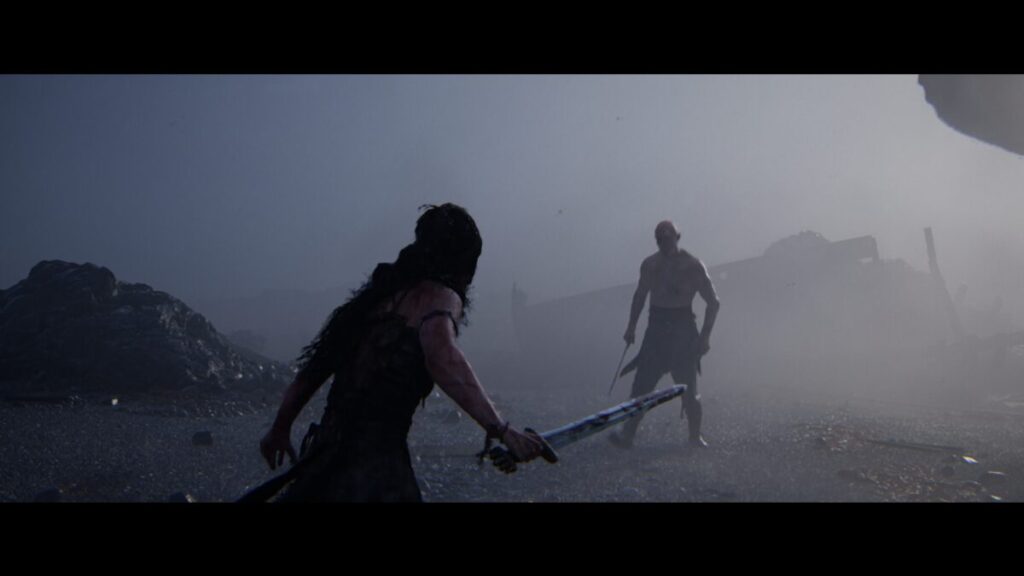
Despite its single-minded approach, its total devotion to the choices it makes at every step, and its limited interest in being a video game in the traditional sense, Senua’s Saga: Hellblade II serves a peerless experience in the medium. There have been a few great narrative-focussed titles that go for cinematic realism before, but rarely does a game balk at video game ethos with the confidence and commitment seen in Ninja Theory’s sequel. That same disdain for gamey mechanics, however, pushes Hellblade 2 towards the realm of an interactive movie.
But then, games can be a lot of things. The are fewer boundaries in gaming than any other form of artistic media, and titles that challenge established understanding of the medium push the margins further out. Hellblade 2 doesn’t offer meaningful exploration, it doesn’t come loaded with side quests and activities, and it doesn’t let you play your own way. It has a strict vision for what it does offer: an uncompromising and harrowing story, immersive environments, photorealistic visuals, and excellent sound and performances. And with its sensitive and important representation of mental health disorders, Senua’s Saga stands distinct among formulaic big-budget games.
Pros
- Emphasis on narrative, characters
- Industry-defining visuals
- Excellent audio design, music
- Sensitive portrayal of mental health issues
- Cinematic, immersive storytelling
Cons
- Shallow combat, exploration
- Repetitive gameplay loop
- Performance issues
Rating (out of 10): 8
Senua’s Saga: Hellblade II released May 21 on PC and Xbox Series S/X. The game was tested on an HP Omen 16-xf0060AX laptop provided by HP.
Pricing starts at Rs. 4,399 on Steam and Xbox Store for PC and Xbox Series S/X. The game is also available on Game Pass.
Entertainment
Lenovo Legion Go Review: Best Windows Handheld?
Published
8 months agoon
August 20, 2024

The Windows handheld console race is starting to heat up in India. While there was technically no real market for handheld consoles even a year ago, we now have options from big players such as Asus, MSI, and Lenovo. Yes, you can get your hands on other handheld consoles online, like the Steam Deck OLED or Ayaneo, but these aren’t available officially. You can only buy the Asus ROG Ally or the MSI Claw A1M in India without worrying about service and spares.
Now, you can also get your hands on the Lenovo Legion Go. It’s the latest Windows handheld console to hit the Indian market and offers better features than the Asus and the MSI. Are these better features enough for you to buy the Legion Go? Can you play AAA titles? How long does the battery last? Is it more portable than a laptop? After spending about a week trying out the Legion Go, here’s what I think.
Lenovo Legion Go price in India
The Lenovo Legion Go will be available in India starting July 1 for Rs. 89,990. You can only have it in a Shadow Black colour option, and only one variant (512GB SSD) is currently available in India. Luckily, the storage is upgradeable.
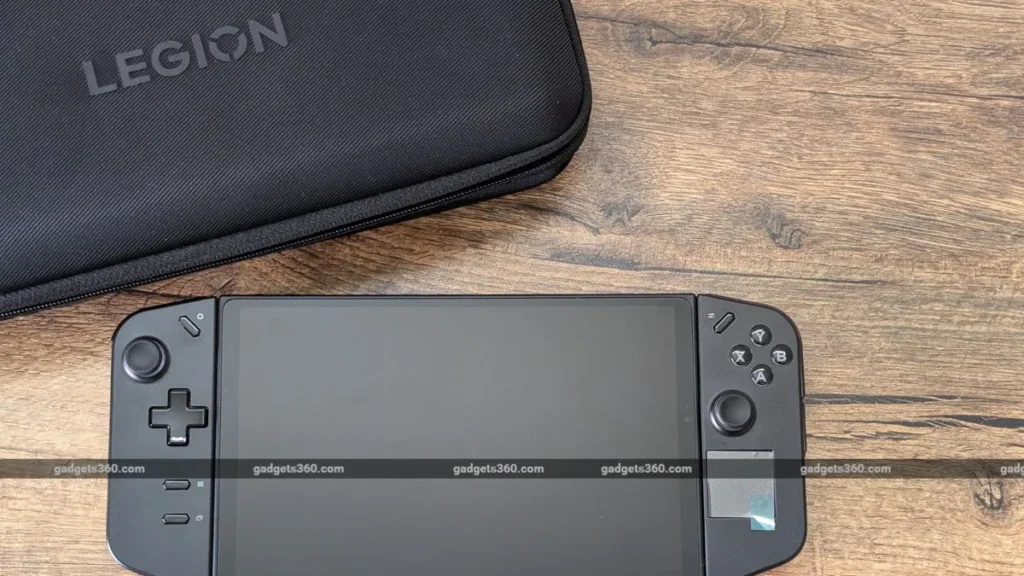
Lenovo provides a nice big carry case for the Legion Go, a 65W charger (you can’t place it inside the carrying case), and a controller base.
Lenovo Legion Go Review: Design and display
The Legion Go is big and heavy (854g) for a handheld. Lenovo has tried to cram all kinds of features and controls onto the device. You get a nice big screen up front protected by Gorilla Glass 5 and controllers on either side of it. Thanks to the way the handheld is designed, you can use it in different ways. You could use it as a traditional handheld with the controllers attached. If you find it too heavy, which you will do after about half an hour of using it, you can detach the controllers, pop out the kickstand at the back and continue playing.
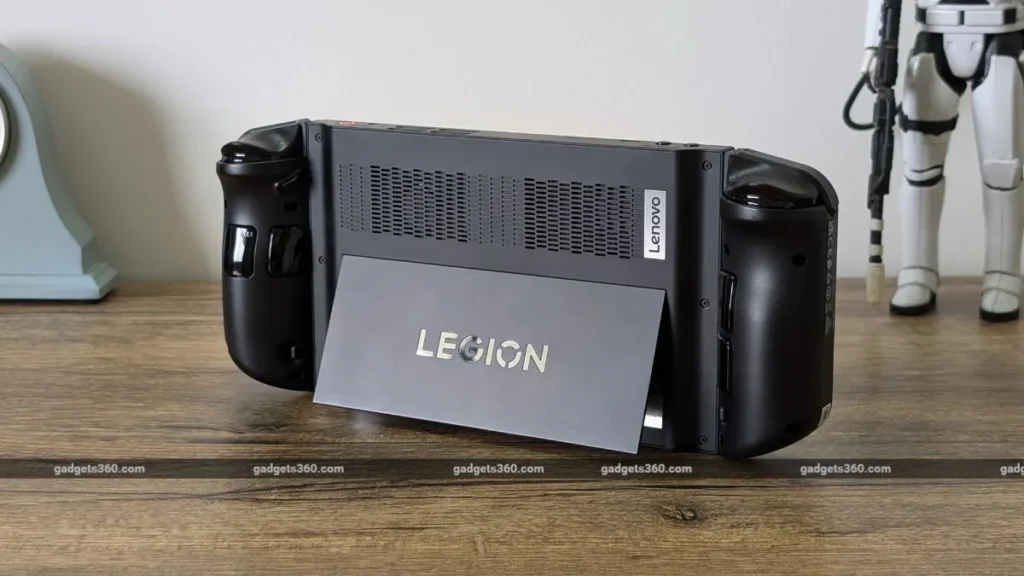
Detachable controllers are something you’ll not find in the competition, and I’m thankful Lenovo thought of this. I’ll talk more about the controllers in a bit.
The back houses the intake grille with the exhaust port at the top. You’ll also find the Power button, a 3.5mm headphone port, a microSD card slot, a USB Type-C port, volume buttons, and dual speakers at the top.
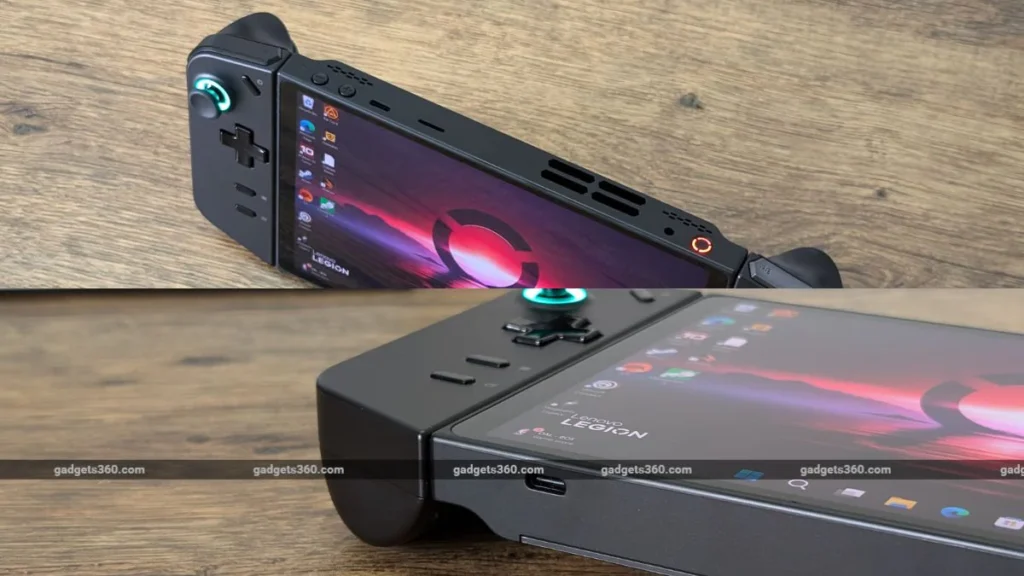
The bottom of the Legion Go has another USB Type-C port. The good thing about the handheld is that both USB Type-C ports are USB 4.0 and support Power Delivery 3.0 and DisplayPort 1.4. You can connect an eGPU or even a monitor and turn it into a desktop PC.
Let’s talk about that big display. The Legion Go has the largest display in the segment. It gets an 8.8-inch QHD+ IPS display with a 144Hz refresh rate and 500 nits of brightness. The screen is plenty bright to play indoors. The display is vibrant, provides a great touch response rate, and is big enough to see what you’re doing on Windows 11. Lenovo claims the panel also meets 97 percent of the DCI-P3 colour gamut. Gaming is smooth and enjoyable on the Legion Go, thanks to the 144Hz refresh rate. The glass covering the display is glossy and catches fingerprints easily.
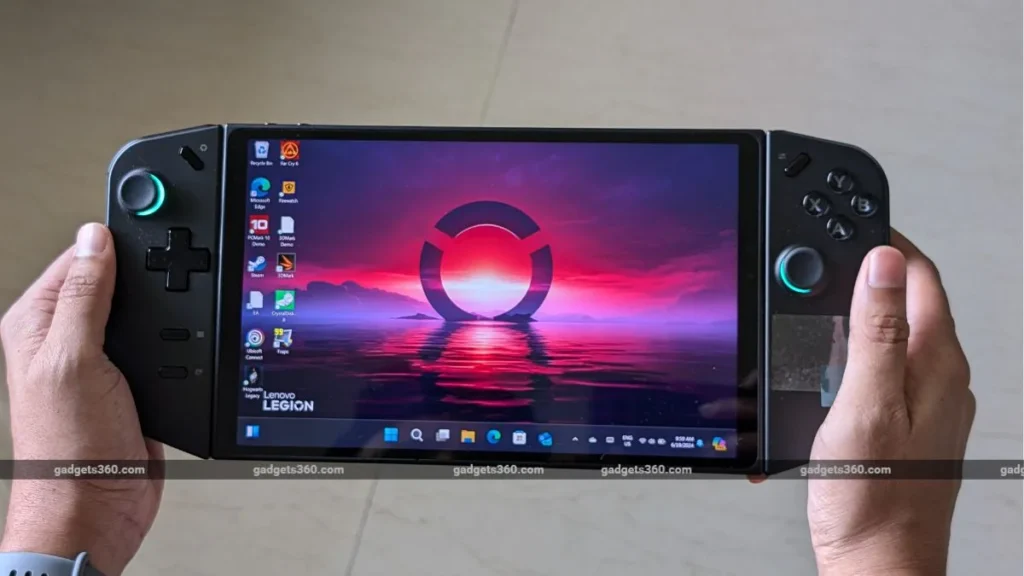
Talking about fingerprints, the soft matte finish of the Legion Go also attracts fingerprints and oil smudges. While cleaning the display is easy, getting rid of all the smudges on the body is a task.
Lenovo Legion Go Review: Controllers
As I mentioned in the beginning, Lenovo has tried to cram a lot of controls on the Legion Go. It can be a bit too much at times, but it’s also nice to have in some rare cases. You get hall-effect joysticks on the controllers, which is great for gaming. Both the controllers are also detachable, which is something I found very useful when playing for more than half an hour. A push of a button and a slide-down action lets you detach the controllers, but it’s harder than it sounds.
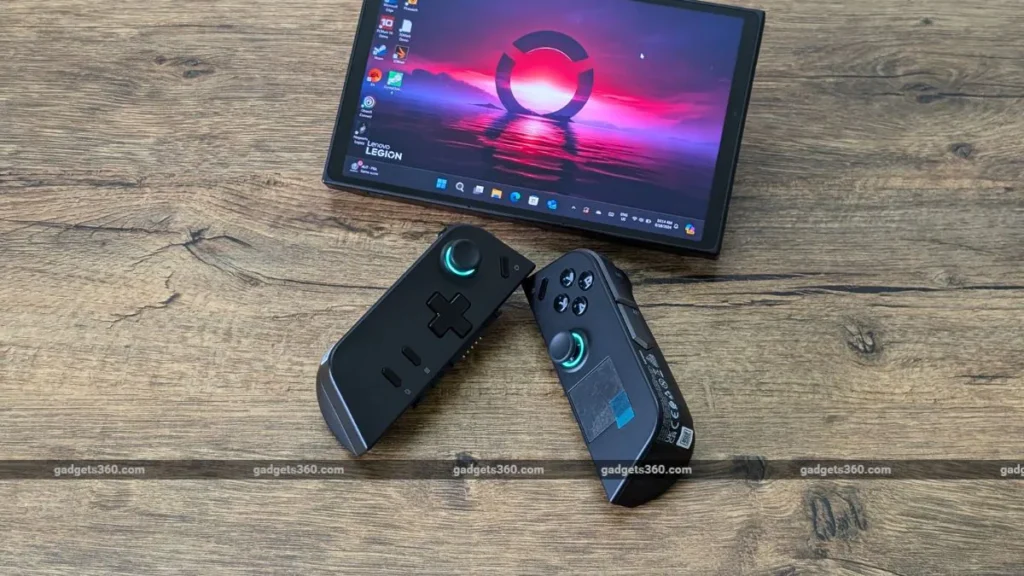
The left controller has the Legion Space key at the top right corner, the L/S joystick with click, a D-pad, and the Menu and View buttons at the bottom. I didn’t find the bottom placement of the Menu and View buttons very useful, as they are difficult to reach in some games. Around the back and the top, you’ll find more buttons, such as the trigger, LB, and Y1 and Y2, that you can assign to various actions.
The right controller has a Quick settings button at the top left corner, the R/S click joystick, A/B/X/Y keys, and a small trackpad that can double as a mouse. It also has the right trigger at the top, M1 and M2 keys on the side, another button at the top, and a scroll wheel, M3 and Y1 keys at the back.
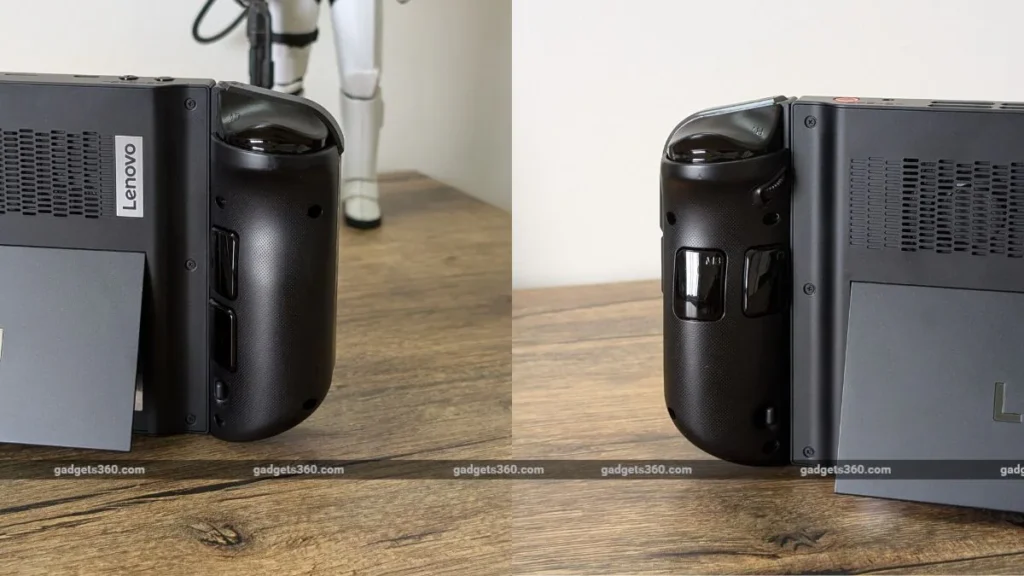
The right controller also has a cool little secret. You’ll find a button at the bottom that says FPS mode. Toggling this will let you use the controller as a vertical mouse. All you have to do is detach the controller, mount it on the included controller base, toggle FPS mode, and start shooting the place up (in-game, obviously). However, I only used the controller in FPS mode once, as it’s much easier to use as a regular controller.
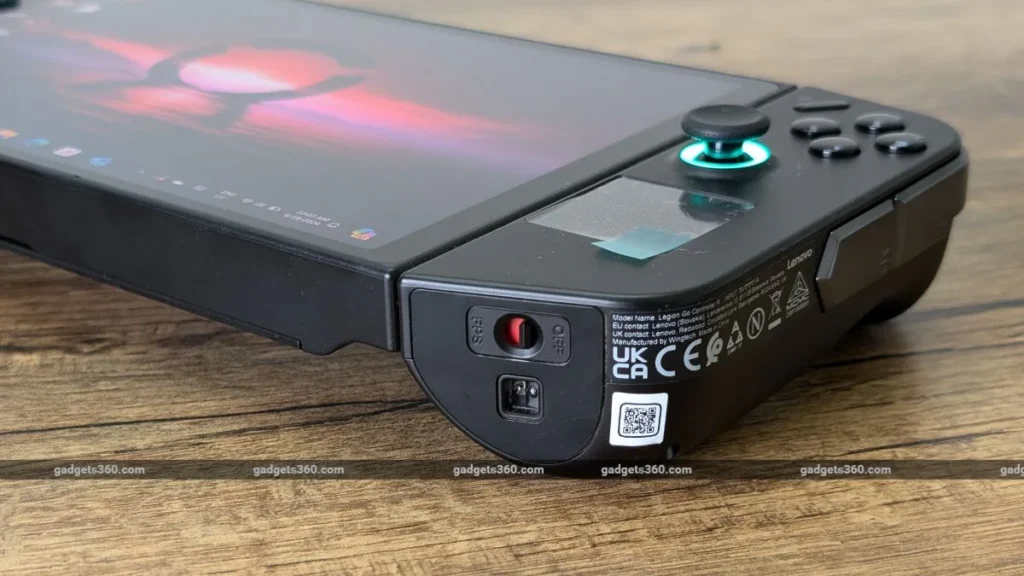
The controllers have a nice feel to them and offer a good grip. You do end up pressing some of the buttons accidentally when lifting up the Legion Go, but luckily, these buttons don’t do anything outside of a game.
Lenovo Legion Go Review: Specifications and software
Specifications on the Legion Go are quite similar to those of the Asus ROG Ally. You get an AMD Ryzen Z1 Extreme CPU with AMD Radeon RDNA 3 graphics, 16GB LPDDR5x-7500 RAM, and up to 1TB M.2 2242 SSD storage. The RAM isn’t upgradable, but you can install an M.2 2242 drive to add more storage. You also get Wi-Fi 6E and Bluetooth 5.1 for wireless connectivity.
The Legion Go houses a 49.2 Whr battery, with the controllers housing 900mAh batteries each.
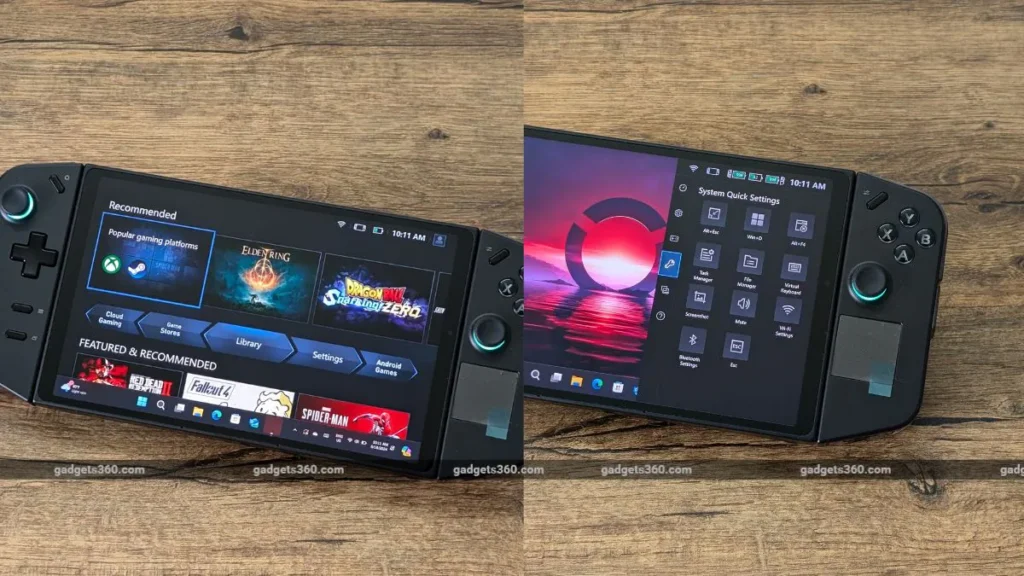
Moving on to software, the handheld runs Windows 11 Home out of the box. You also get the Legion Space software, which lets you change the performance modes, customise other device settings, and act as a central hub for all your games. You can also use the Quick settings button on the right controller to change resolution and power modes, change refresh rate, and adjust all kinds of system settings.
I’ll be honest: Windows 11 isn’t designed for handheld PCs. Microsoft needs to do something about it, or OEMs need to come up with their custom OS for handhelds. However, the 8.8-inch display on the Legion Go did make the Windows experience less frustrating.
Lenovo Legion Go Review: Performance
Now, let’s look at how the Legion Go performs in games. While you can play AAA titles on the handheld, don’t expect high frame rates and Ultra graphics. It still packs in a mobile chipset that can’t offer that kind of performance. You get three power modes on the Legion Go, each offering a different TDP. In custom mode, you can get up to 30W TDP from the AMD Ryzen Z1 Extreme, and this is where you’ll find the best frame rates in games. You also get a Quiet, Balanced, and Performance mode. I ran the device in performance mode while playing games, and it delivered 20W of TDP.
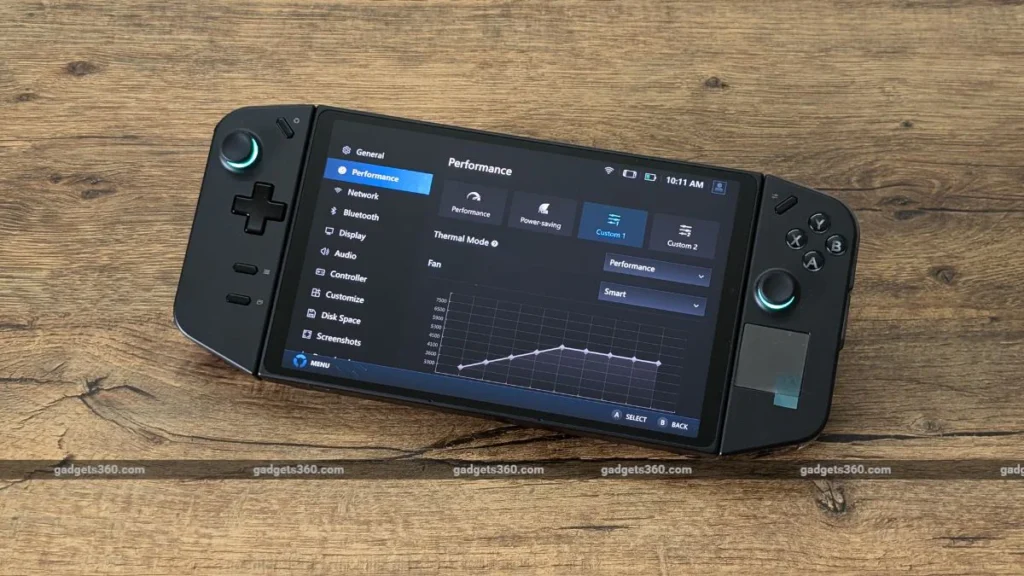
I ran a couple of benchmarks and played several games, such as Hogwarts Legacy, Far Cry 6, Snowrunner, and a couple of other indie titles. With games like Hogwarts Legacy and Far Cry 6, I had to lower the refresh rate and set the resolution to 1080p or lower to achieve smooth gameplay. I got around 50 to 55 fps in Hogwarts Legacy with low graphics and about the same in Far Cry 6 at high.
In benchmarks such as PCMark 10, the Legion Go scored 5,907 points, whereas, in 3DMark, the handheld managed a score of 3042 in the Time Spy benchmark test. Overall, the Lenovo console offers good gaming performance.
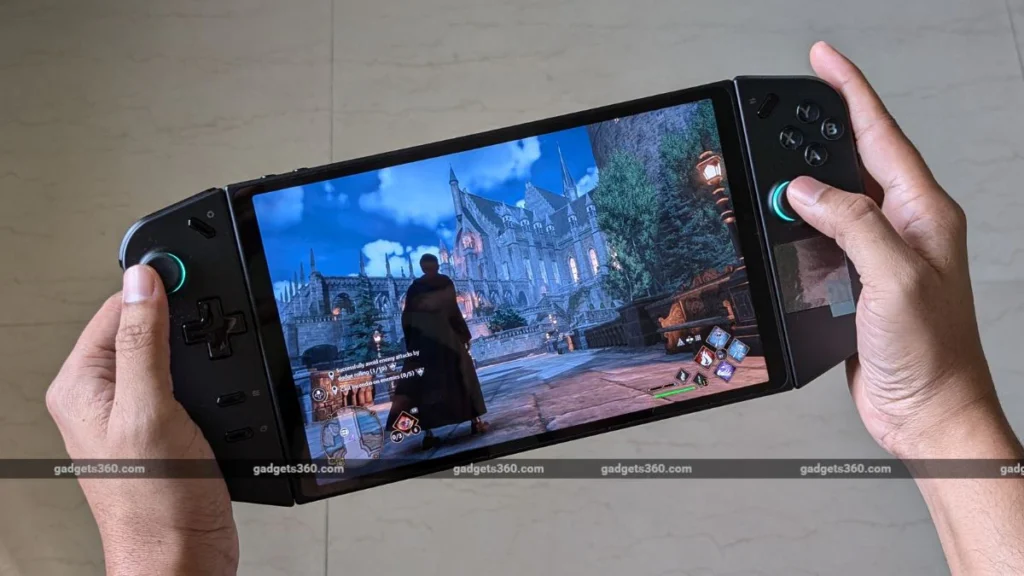
When it comes to cooling, the Legion Go does a good job of keeping the heat away from your hands. It gets a single fan setup, which gets loud enough to drown out the dual speakers as they’re placed near the fan.
Lenovo Legion Go Review: Battery life
The battery life on the Legion Go is nothing great. If you’re playing AAA titles, you can expect anywhere from 1 to 2 hours of continuous playback. Lighter games and indie titles will let you push the battery life to about 3 hours. The 49.2 Whr battery just isn’t big enough for long hours of gaming. I also noticed that the drop from 20 percent to 5 percent is rather quick. The sleep function is non-existent. I was constantly woken up at night with the device randomly turning on with the fan spinning at full blast. But that’s most likely a Windows problem, not Lenovo.
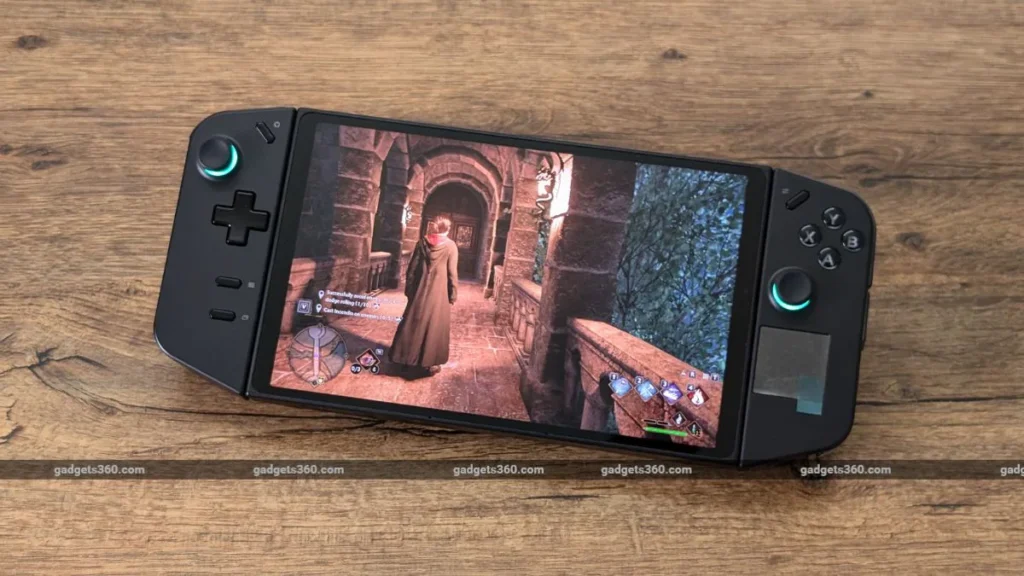
As for charging, it took me about one and a half hours to fully charge the Legion Go from zero, and a 10-minute charge gave the handheld about 25 percent battery, which isn’t really enough to play games.
Lenovo Legion Go Review: Verdict
The Lenovo Legion Go’s only two official competitors in the Indian market are the Asus ROG Ally and the MSI Claw. As we saw in our Asus ROG Ally review, the Legion Go performs similarly in both gaming and other scenarios. It’s only slightly better when it comes to higher fps in games. We’ve not tried the MSI Claw, but I don’t expect it to perform better than the Lenovo.
Lenovo’s Legion Go shines thanks to its brilliant display and good performance despite offering too many buttons on its controllers. It’s also very large, and even larger when you place it inside its case. You’d need a whole backpack to carry the thing around. You can instead use that backpack to carry a decent-spec gaming laptop, which should be easily available at Rs. 89,990.
The Legion Go is great if you want a handheld Windows PC that is mostly used at home. If it were me, I’d wait for the next iteration. If you’ve got the money, go for it, as it’s a fun gadget. Is it the best handheld console? No. But it certainly is the best Windows handheld currently available in India, as there’s not a lot of competition at the moment.
Pros:
- Excellent display
- Good performance
- Detachable controllers
- Good build quality
- Can play a lot of PC games
Cons:
- Bulky
- Average battery life
- Windows 11 OS
Ratings (Out of 10)
- Design: 8
- Display: 9
- Software: 7
- Performance: 9
- Battery life: 6
- Value for money: 7
- Overall: 8
Business
ViewSonic X2-4K Review: Made for Gaming, But Does a Lot More
Published
8 months agoon
August 20, 2024
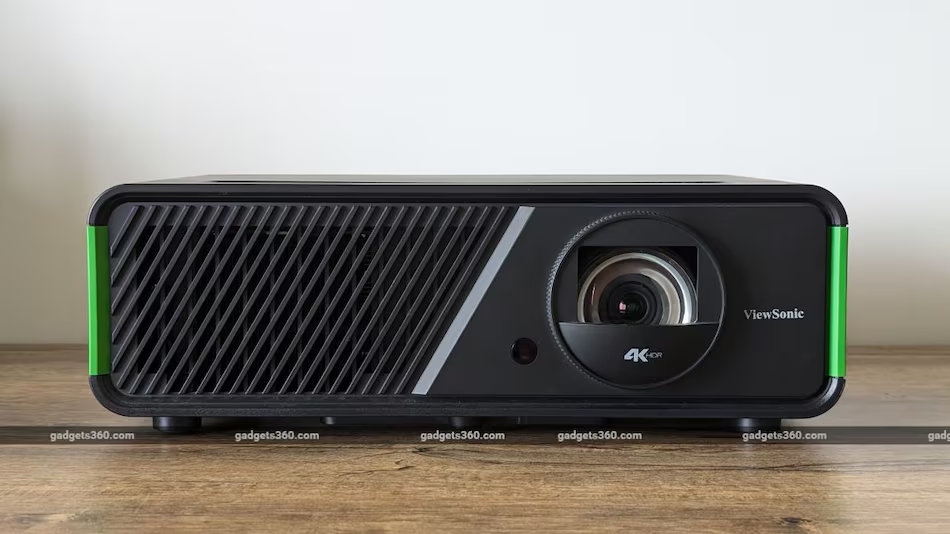
For most people, a projector isn’t the conventional way to watch content. TVs are still the king when it comes to home entertainment. However, some brands, such as ViewSonic, make some really good projectors for home use. It also makes some unique projectors, such as the X2-4K, which is designed for gamers. Now, most gamers aren’t going to even think of buying a projector for their gaming setup, as most projectors don’t offer high refresh rates, 4K resolution, and so on.
Things are very different with the ViewSonic X2-4K, though. The projector has been made for Xbox and gets the Microsoft guarantee. It offers some unique features, such as 1440p resolution at 120Hz, that you won’t find on regular projectors. So, should a gamer consider this projector, a 65-inch TV, or a large curved monitor? And what about PC or PS5 customers? Can they use this projector? I’ve been using the X2-4K for about a week now to try and answer all those questions and more.
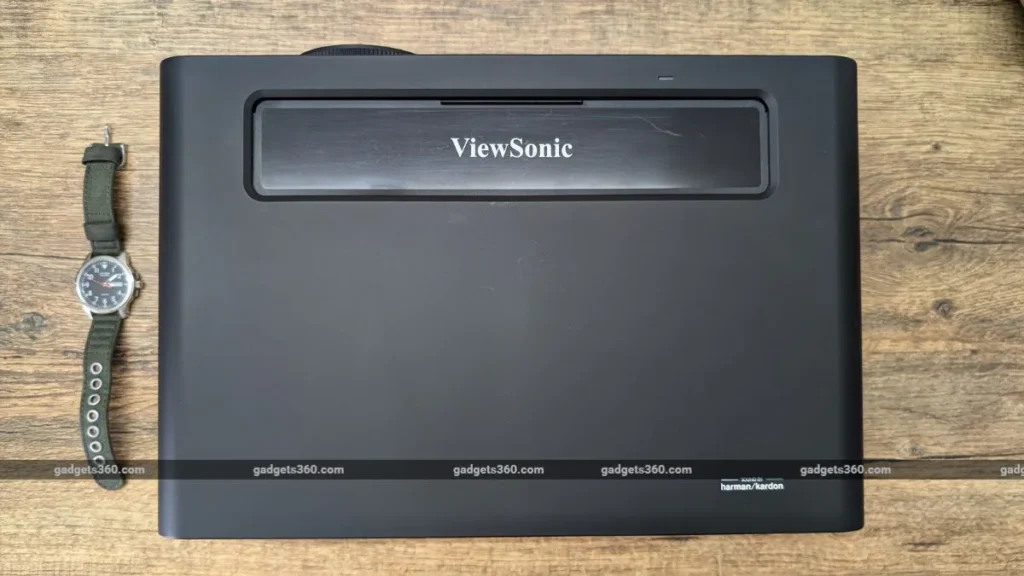
The ViewSonic X2-4K is expensive, and there are no two ways about it. For the money you spend on the projector, you can buy a 65-inch 4K QLED TV that’ll be much more versatile. In India, the projector is currently available at around Rs. 2,80,000.
It is available in a single black colour option with some green Xbox accents. The box contains a remote with backlit buttons, a USB Type-C cable, and different types of power cables.
ViewSonic X2-4K Design, specifications: Pretty compact
When I received the X2-4K, I expected it to be large in size, thanks to it being a 4K projector. However, I was quite surprised upon opening the package. The device is as big as a shoe box but weighs around 3.5 kg. ViewSonic uses durable plastic for the construction, and you get large vents on the front and sides. The front houses the lens, which is partially protected, and an IR sensor. It’s easy for the lens to catch dust as there’s no lens cover.
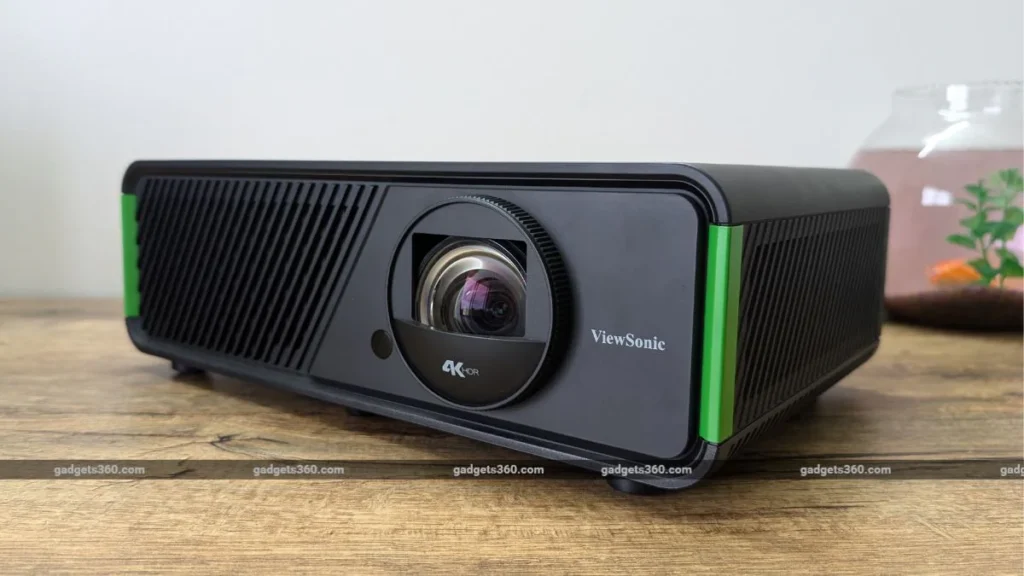
Moving to the top, you’ll find a sliding door that hides the focus/zoom rings and a keypad that includes projector controls. You’ll also find an LED indicator on the top.
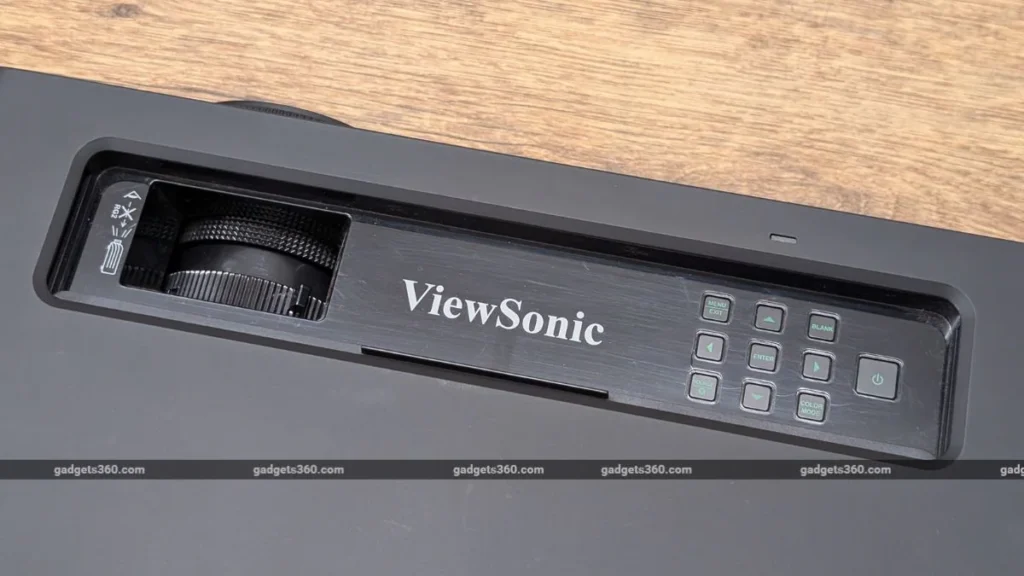
The bottom has four rubber feet and one wide adjustable leg placed in the centre that can be used to slightly prop up the projector.
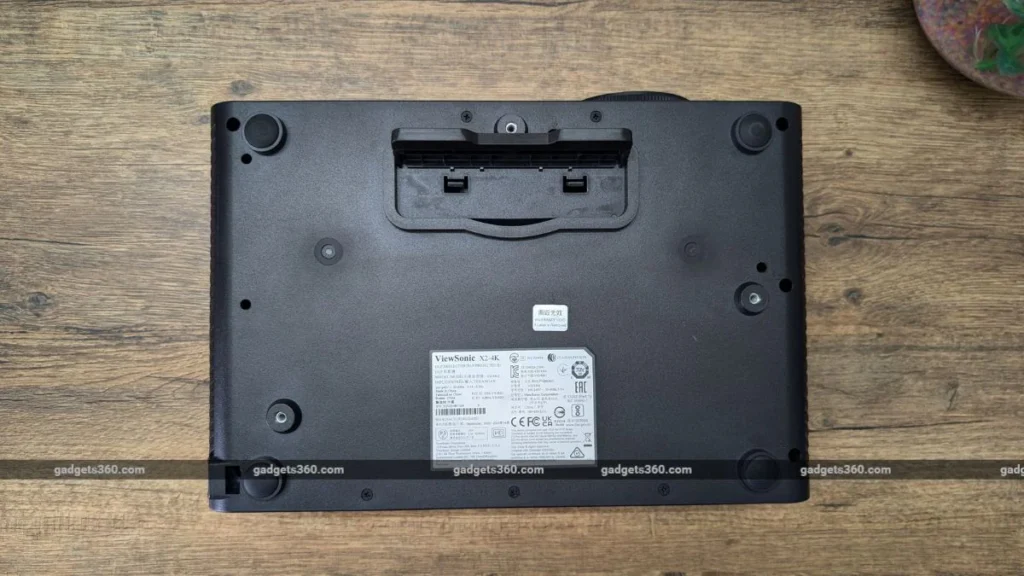
As for styling, the projector has green corners on the front to denote the exclusive ‘Made for Xbox’ design. However, I didn’t find the term Xbox anywhere on the projector. The projector has dual 6W Cube speakers by Harman Kardon on either side. You’ll find all the ports at the back, which has a slightly textured design compared to the rest of the product, which should make it easier to find the inputs in the dark.
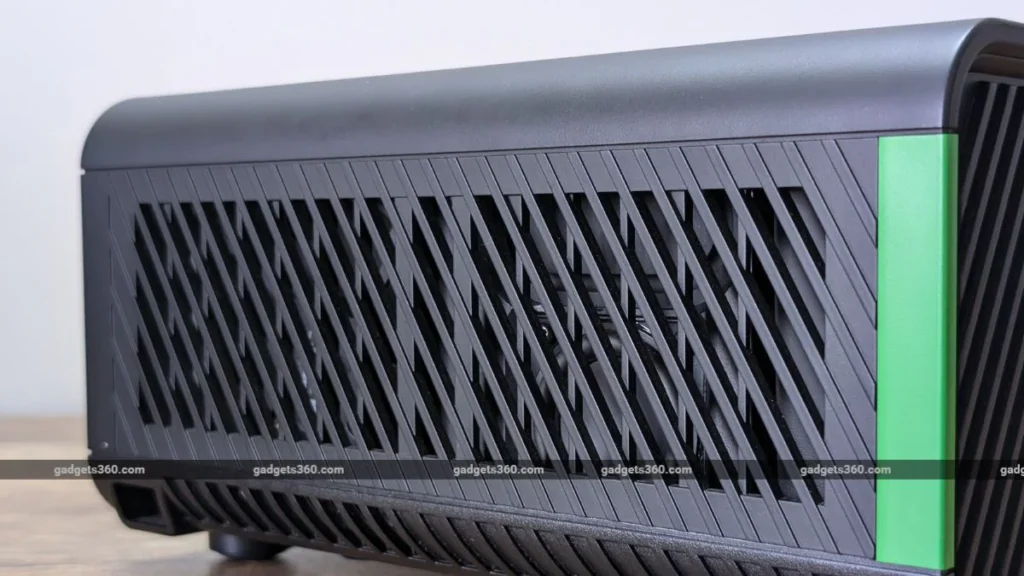
n terms of specifications, the X2-4K is a short throw projector with a 0.65-inch 4K projection system and a throw ratio of 0.69-0.83. It gets a 2,900-lumen LED lamp rated to last 60,000 hours in normal mode. You can get between a 60 to 120-inch projection from just 1.5 to 3 metres of distance at 4K resolution. ViewSonic recommends a throw distance of 0.92 to 2.2m, though. The projector also offers 1.2x optical zoom so that you can go even larger than 120 inches, but this will affect the clarity.
ViewSonic X2-4K Connectivity, features: Plenty of options
The ViewSonic X2-4K has all of its inputs located at the back, and you get plenty. There’s a 3.5mm audio out port, an RS-232 port, a USB Type-A service input, a dual HDMI 2.0 port with HDCP 2.2 support, a USB Type-C port, and another USB Type-A standard port. A second IR sensor is also available at the rear and a power input slot. As for wireless connectivity, the projector offers Bluetooth 4.2 for audio and Wi-Fi for screen mirroring.
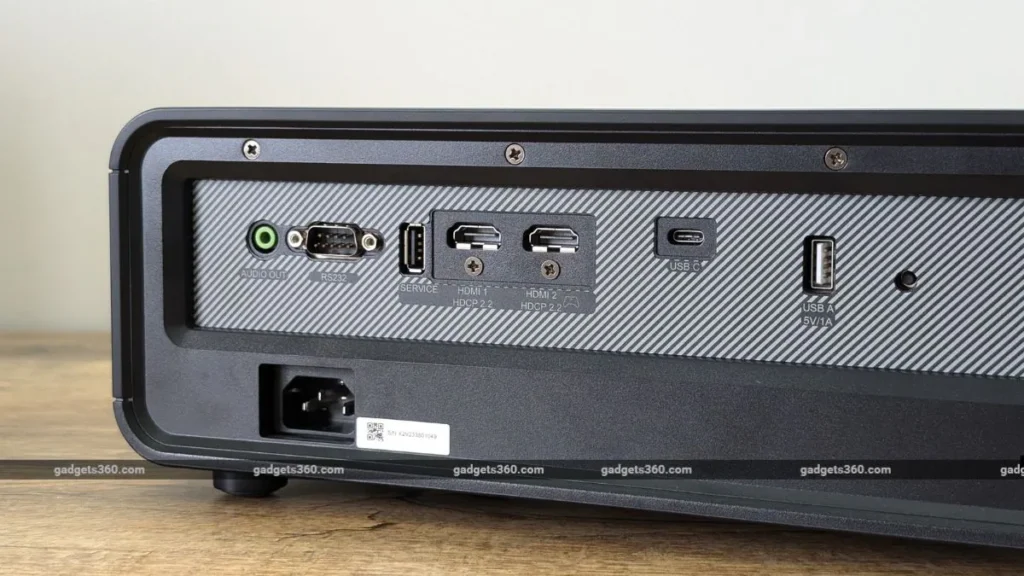
Now, the main feature of this projector is not that it offers 4K HDR output. What’s interesting about the X2-4K is the ability to get up to 240Hz refresh rate when connected to a gaming console. The projector offers 4K at 60Hz, 1440p at 120Hz, and 1080p at 240Hz. At 240Hz, ViewSonic also claims that you can get a super low input lag of 4.2ms. While the company says the projector is designed for Xbox, it’ll also work great with Sony’s PlayStation 5 and gaming PCs.
The projector also has an inbuilt storage of 16GB, out of which 12GB is usable for apps and more. The UI on the X2-4K is easy to use, and you get a Bluetooth backlit remote that you can use to switch modes or navigate around the projector easily. You can also control the projector using your mobile phone by downloading the vCastSender app.
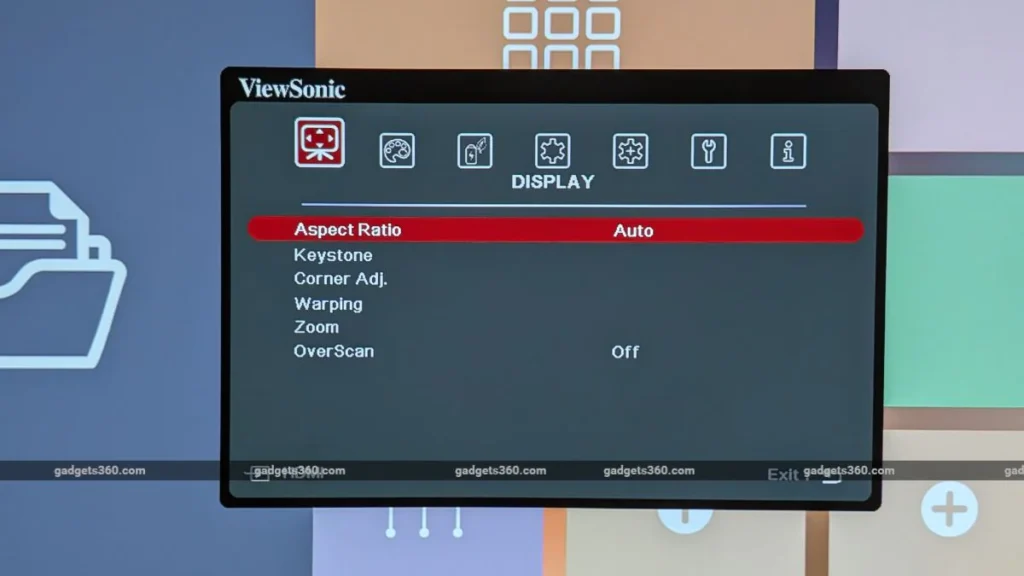
ViewSonic has included features such as a H/V keystone with an auto V keystore and 4 corner adjustments that allow you to enjoy a flat projection from different angles. The projector also gets an Instant power feature, which immediately turns on the device like a smart TV with a startup animation. It even gets a certification by TUV SUD for improved eye protection.
ViewSonic X2-4K Performance: Will leave you impressed
All right, let’s talk about the performance, and this is where the ViewSonic X2-4K will leave you very impressed. While this is being advertised as a projector designed for gaming, it also excels at being a projector for watching content. First, I’ll talk about performance in gaming. As mentioned before, this is the only projector exclusively designed for Xbox. However, this doesn’t mean that you need an Xbox to enjoy the high-refresh rate offered by the projector. You can connect the projector to a PS5 or a powerful gaming PC/laptop for high-refresh-rate output.
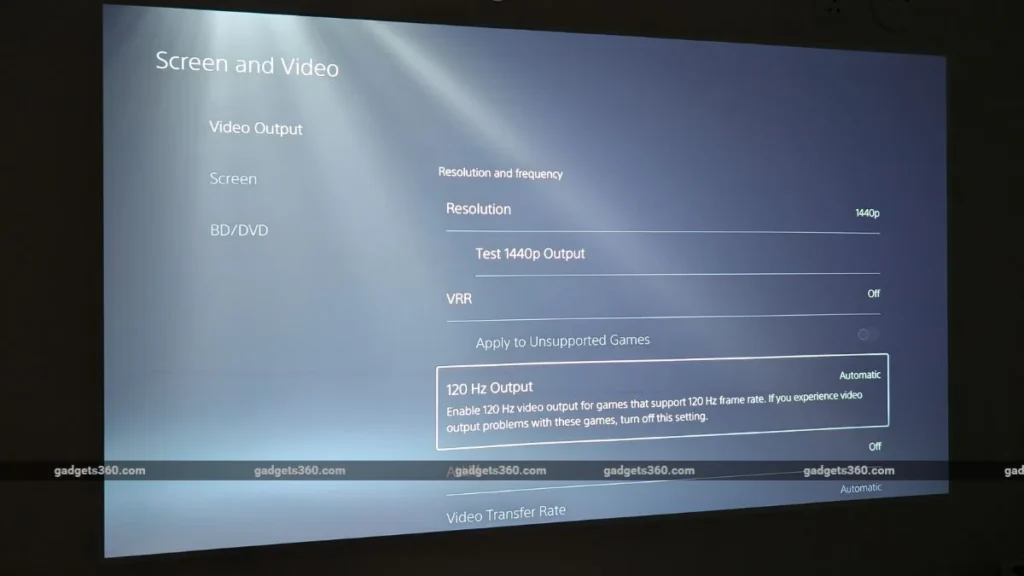
I connected the X2-4K to my PlayStation 5 and played games like Horizon Forbidden West, Red Dead Redemption 2, and EA Sports WRC. I set the resolution to 1440p, which delivered a 120Hz refresh rate. The gaming was smooth, and I enjoyed playing on the console more than my 55-inch TV. Thanks to HDR support, the colours look great, and you can also choose from the different colour modes that are available. I went with the Gaming profile, which seemed to be the best suited for gaming. You can also adjust all of these colour profiles according to your liking. When watching movies or TV shows, I’d switch over to the Movie colour mode, which offered good contrast, colours, and an overall smooth image.

The projector also offered me a standard 4K HDR output at 60Hz, which worked great with the PS5. As for brightness, the projector can get super bright, and I was able to watch content even with a lamp turned on in the room.
In terms of audio, I was once again impressed by how full the output is. The projector gets dual 6W cube Harman Kardon speakers on either side that deliver excellent sound. It is plenty for a medium-sized living room and offers good bass as well. When positioned centrally in front of you, you also get an immersive experience.
The projector also performs very well when it comes to heat management. During long hours of usage, in 34-degree ambient temperatures, I never heard the fan noise.
ViewSonic X2-4K Review: Verdict
The ViewSonic X2-4K, while advertised as a gaming project, can do a lot more than make your gaming sessions fun. It is on the more expensive side, priced at Rs. 3,25,000, but you do get what you pay for. The projector offers excellent 4K output, good colour reproduction, a high refresh rate, and full sound. Luckily, you will be able to find the X2-4K listed at a much lower Rs. 2,80,000 on Amazon, which makes it an even better deal. I’d recommend the ViewSonic X2-4K not only if you’re looking for a gaming projector but also if you want a mix of gaming and content streaming. It’s an excellent short-throw projector in all aspects.
Price (at the time of this review): Rs. 2,80,000
Ratings:
Design: 9
Performance: 9
VFM: 8
Overall: 9
Pros:
- 4K HDR output
- 1440p at 120Hz is excellent for gaming
- Great sounding Harman Kardon speakers
- Bright 2,900 lumens LED
- Easy-to-use UI
Cons:
- No lens protection
- No Ethernet connectivity
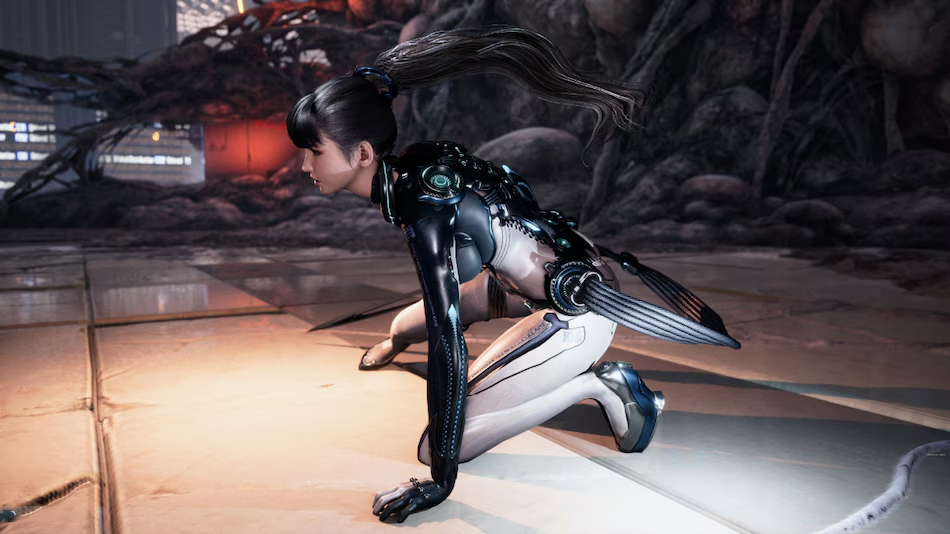
Good video games know what they are. A strong sense of self-awareness about their strengths and weaknesses — it could be the game’s narrative chops or its mechanical robustness — make for games that don’t suffer from an identity crisis. It also prevents games from feeling bloated and scatterbrained. But a concentrated approach can force-fit a straitjacket onto a game, as well, leaving it feeling like a one trick pony.
Stellar Blade, the debut game from Korean studio Shift Up, is also laser-focussed on its singular skillset. As an action-adventure title, it zeroes in on the action with admirable flair, but it purposefully avoids complexity in almost every other department to deliver an experience that constantly urges you forward and deeper into its combat playground with barely any meaningful distractions along the way.
If you want a more rounded experience from your video game, if you desire meaningful side quests, an affecting story and three-dimensional characters, then Stellar Blade will stop short of ticking the right boxes. But, if a 20-hour single-minded rush through monster-infested levels, adorned with kinetic action, challenging boss fights, and flashy visuals, sounds appealing to you, then it will serve exactly what it promises.
Stellar Blade is also not completely barren when it comes to ideas: its grotesque monster designs, while derivative, are interesting and often anachronistic, fitting the nightmarish world of Bloodborne more than the slick ruins of planet Earth in Stellar Blade, thus making for an unsettling experience whenever they show up; the excellent in-game music not only underscores the frenetic combat, but also accentuates the idle time between the encounters; and the game is almost perfectly paced between cascading sections of breathless action and idyllic moments of relief.
And then, there’s the much talked about character design for the protagonist, Eve, a space soldier dropped onto a post-apocalyptic Earth to save the remnants of humanity and take down the violent, monstrous species that roams the planet. Eve is designed as an E-girl, with anime eyes, flowing silky hair, voluptuous body and skin-tight outfits to match the whole persona. It’s nothing you’ve not seen in anime and other forms of online media before, but it certainly stands out in the video games medium. Games have long been accused of designing their female characters from a hyper-sexualised male gaze (think Lara Croft in Tomb Raider) and the medium has often veered into sexist and stereotypical depictions of women in general.
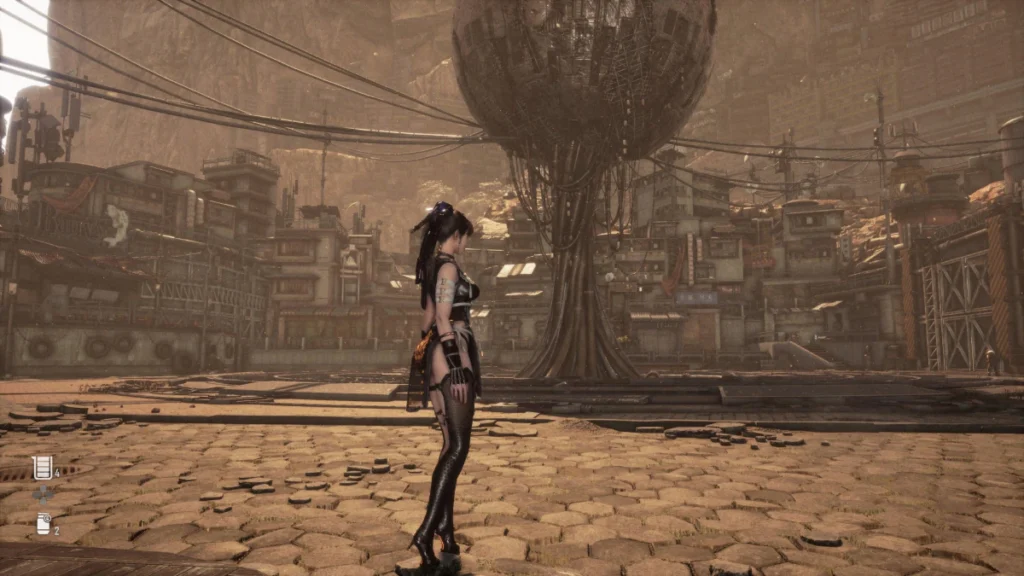
That’s not to say that games have not had iconic strong female characters — you can criticise Lara Croft’s design, but the character took a life of her own beyond video games and reclaimed her sexuality to emerge as perhaps one of the earliest and longest lasting sex symbols in the medium. And she had the personality to match. Even if you’ve not played Tomb Raider games you know of Lara as feisty, intelligent and indefatigable. It’s a testament to the characters’ aura that she later went on to be portrayed by Angelina Jolie in Tomb Raider films. The same goes for Bayonetta, another video game heroine known for her risqué character design and personality. The leather-clad witch never shies away from embracing her femininity and is just as ready to drop an indecent innuendo as she is likely to drop you dead.
The same, however, cannot be said for Eve. Her overtly sexual depiction is aggressively incongruous with her boring, flat personality. She doesn’t have the confidence and charisma to match the in-your-face suggestiveness of her character design. She’s neither as embracing as Bayonetta, nor as empowered as Lara to own her sexuality, thus making her persona feel like a hormonal teenager’s idea of what sexy is supposed to be. Heck, Eve doesn’t even have an idea of who she is. Had the designers at Shift Up paid as much attention to her personality and identity as they did to her backside, the Stellar Blade heroine probably wouldn’t have ended up seeming like a sex doll with a sword.
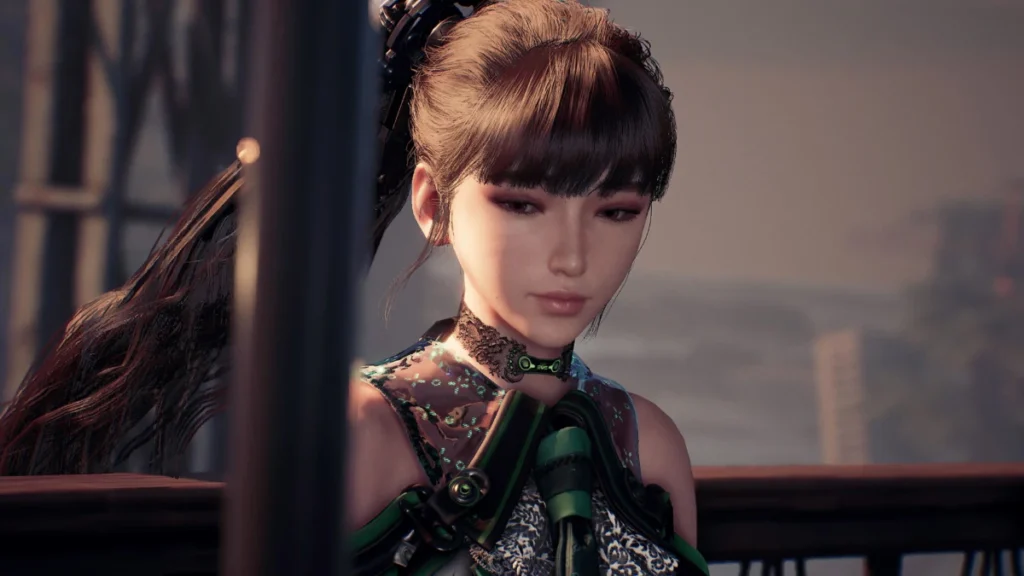
Stellar Blade is not aiming for narrative excellence either. There’s a functional story about an Earth left to its ruinous fate after humans lost a war to Naytibas — monstrous, blood-thirsty creatures that now infest the planet. Driven away from their home and now living in a colony in space, humans send an airborne squad of angelic warriors to defeat the Naytibas and take back what was lost.
Eve and her squad are dropped into the middle of the conflict, and we’re taken through a quick tutorial section that dives into the basics of attacking, blocking, dodging and parrying. Most of the squad is lost during a planetfall gone wrong and Eve soon loses her mentor, Tachy, to a Naytiba attack. She barely survives the Naytiba encounter herself and escapes with the help of Adam, a human scavenger who survived the initial conflict and remained on the last human settlement on the planet.
The story then takes predictable routes as Eve gathers her strength and embarks on a journey to save mankind and eliminate the Elder Naytiba, the leader of the monsters. She’s aided by Adam, who guides her way through the devastated planet, and Lily, an engineer from an earlier expedition, who crafts new gear pieces and upgrades for her. There are some twists along the way and a final-act revelation that threatens to upend the nature of the conflict itself. But the narrative never rises above being merely serviceable.
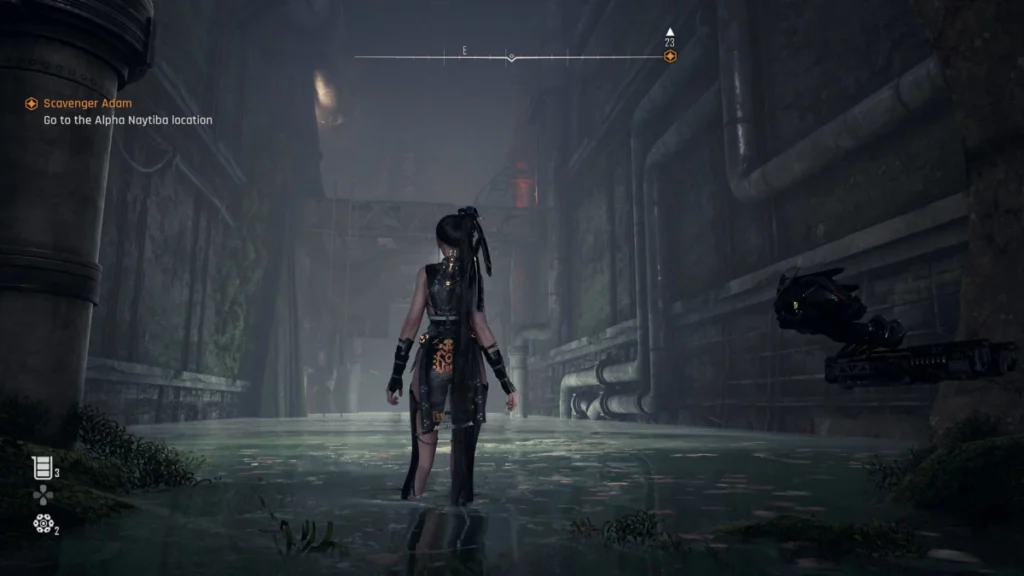
The characters lack any depth beyond the archetypes they inhabit, and the voice acting is delivered as flat as a slice of bread. The writing is mostly expository, and we barely get to know more about the people on the screen, their motivations and desires. Eve and her allies interact in robotic ways, going through the motions of their programming — they might as well talk in binary. There’s no dramatic or emotional thrust to the story and the sky-high stakes are left feeling weightless at every crucial turn. And as a game that tries so hard to be sexy, Stellar Blade is ironically completely sexless. Beyond the caricature of provocative physicality and juvenile eroticism, the game and its characters lack any real allure and sexual tension.
Eve is supposed to be this overpowered interstellar soldier with a perfectly sculpted body and an army of abilities at her disposal. She carries a sword the size of a streetlamp that she uses as a hairpin when she’s not in combat! She should be cocksure and witty, dropping foes and jokes in the same breath. But she mostly turns up meek and unsure of her own place and purpose on this planet. Eve is ostensibly presented as a dress-up Barbie meant for the male fantasy — change her cute outfits and swap out one schoolgirl haircut for another before you head to battle.
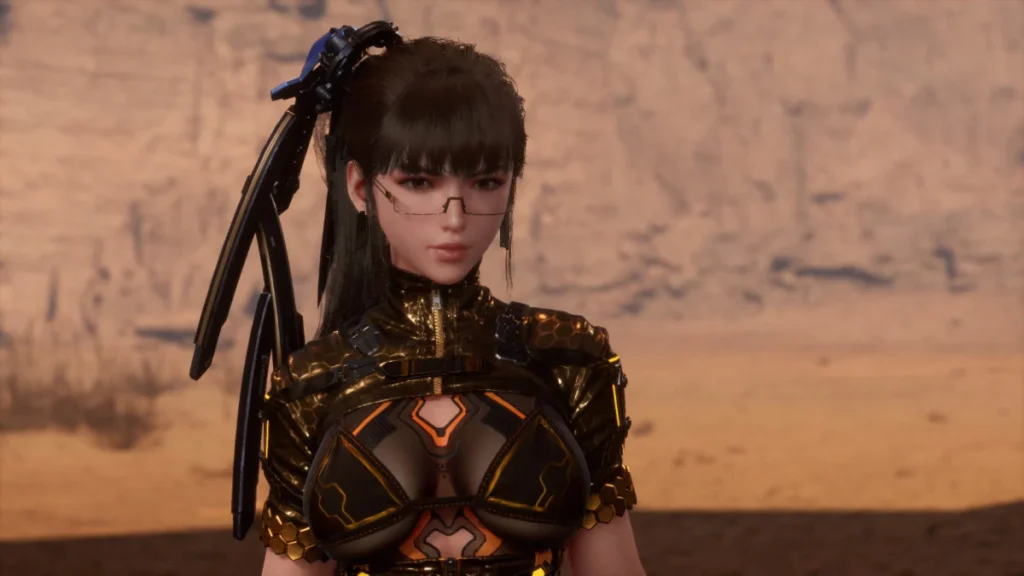
But it’s the battle part in Stellar Blade that distinguishes itself even as the rest of the parts fail to rise above generic video game design. Shift Up has acknowledged taking inspiration from PlatinumGames’ acclaimed action-RPG, Nier: Automata, both in its themes and its action. And while Stellar Blade’s combat lacks the versatility of the 2017 classic, you can clearly see the similarities in the kineticism of the moves. The combat in the game is flashy, based on chained combos and special Beta abilities that come with exaggerated animations and deal devastating damage.
The combat basics are what you’d expect: you memorise enemy attack patterns, dodge or parry incoming attacks and hit back with chained attacks linked to specific button combinations. When you dodge or counter an enemy at just the right moment before the attack lands, you execute a perfect dodge or parry and get a chance to riposte and deal back damage. These defensive and offensive actions slowly fill up the Beta gauge, which allows players to utilise Beta skills in combat. These special abilities, triggered by holding down the left bumper on the DualSense controller and pressing corresponding face buttons, come with unique animations and deal high damage to the enemy’s health or shields.
Later in the game, you also unlock Burst skills, activated by holding down R1 and corresponding face buttons, that result in massive area-of-effect attacks capable of inflicting damage to multiple foes. These are some of the flashiest moves in Stellar Blade, usually accompanied by a long winding-up animation and an explosive impact.
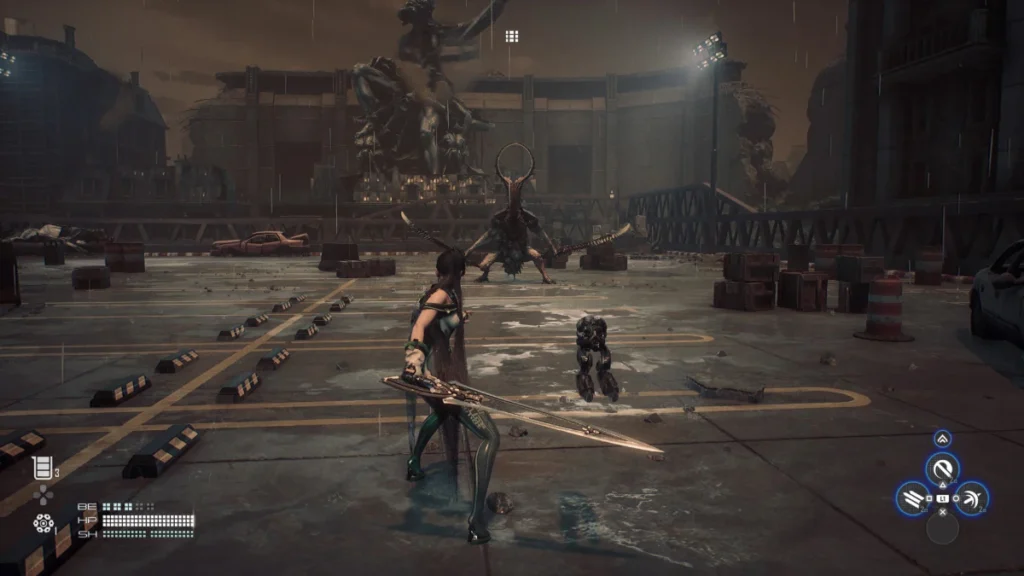
Aside from these special abilities and melee attack combos dealt with her sword, Eve also has a variety of ranged attack options at her disposal. You begin with a selection of grenades that deal damage to enemy health or shields and later upgrade your drone to double as a versatile firearm that can discharge standard slugs, a charged laser attack, homing missiles, shotgun shells and more. Upgrade modules obtained via exploration and combat lets you further enhance the capabilities of the firearm. While these ranged attacks don’t quite replace the melee combat, they bring a bit of handy firepower that can be used in tandem with the sword attacks.
Stellar Blade also allows for a bit of perfunctory stealth: you can slowly walk up behind an enemy or position yourself on a ledge above them and hit the triangle button when the contextual prompt comes up on the screen to execute them in a single blow. These executions replenish the Beta gauge and once upgraded, can be chained together to take down multiple enemies. These stealth interactions, however, are a bit clunky and you can sometimes end up not locking into the contextual execution action and instead trigger a standard heavy attack and alert the enemy of your presence.
The platforming and exploration sections in Stellar Blade suffer from similar jank. While general movement in the game — running, sprinting and jumping — work as expected, when a combination of these is required to be performed with precision in specifically designed platforming sections, the game just falls apart. The game loses all fluidity and slickness during these sections and Eve feels like she’s been straitjacketed with her animations feeling stiff. Some of these platforming sections are also functionally broken. Later in the game, you unlock the wall running ability and soon meet platforming sections where you have to chain wall runs to reach across wide gaps. I didn’t die in the entire game as much as died in these sections. Jumping off a wall run into another is so imprecise and clunky that these sections grate against the general slickness of the rest of the game.
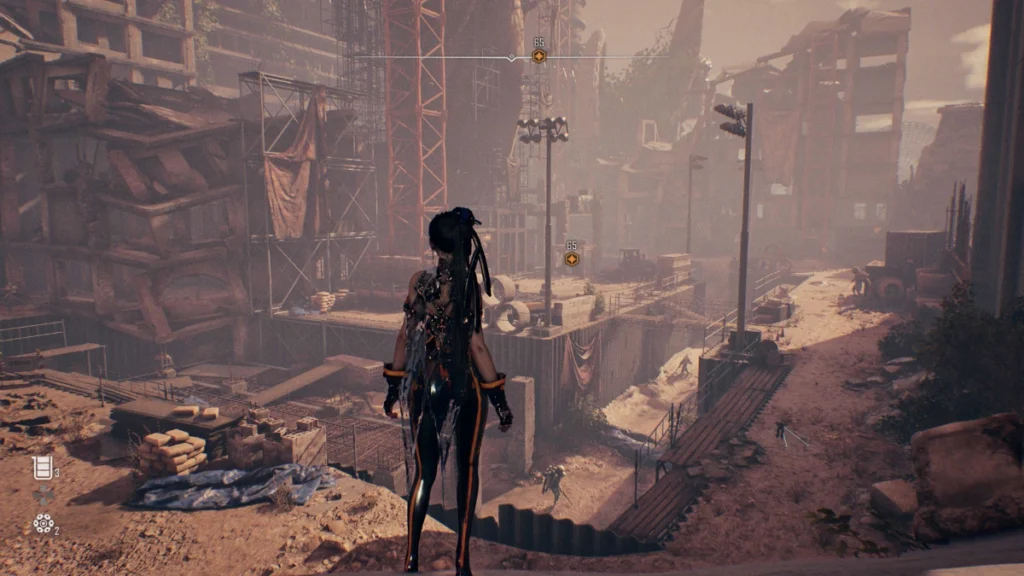
Action games live and die at the altar of their combat systems, and with story and characters taking a backseat in Stellar Blade, the scrutiny falls onto its action gameplay. Here, Shift Up’s game gives a good account of itself. Combat in stellar blade is weighty, but never weighed down. There’s a satisfying crunch to the action, but it also feels flowing and freeform. While attack inputs are limited to a standard and a heavy attack, there are enough combos here for attacks to not feel repetitive. Beta and Burst skills bring a bit of flair to the combat and meaningful skill tree updates keep bringing new abilities to the table.
While the general design of the Naytibas is limited to a select few foes that keep repeating across levels, it’s the boss encounters that truly stand out. Bosses in Stellar Blade have distinct monstrous designs and require you to be quick on your feet and smart about when you choose to stop being defensive and attack. To be clear, these fights are nowhere near as difficult as the ones in Soulslike games, even though Stellar Blade adapts a few tenets from the genre and presents them in a more accessible way. But these encounters are always thrilling and fun, and the excellent visuals and rousing music help sell a sense of scale and a feeling of “this s**t is epic and cool!”

But what I enjoyed more were the moments of idyllic relief that punctuate these kinetic encounters. Before and after taking on big, mean bosses or groups of enemies lining a particular section of the level, you come across camps that let you rest and replenish your consumables. These camps essentially act as bonfires from Dark Souls, offering a relief from the dangers that litter the map, but also respawning Naytibas you’ve slain in the level once you sit down and rest.
Beyond the functional purpose of the camps, however, I was more taken by their aesthetic appeal every time they popped up in a level. They are presented as a curated space evoking a nostalgic idea of recreation. There’s a cozy chair, a record player playing chill tunes that you can cycle through, a vending machine that acts as shop for items and consumables, and a giant parasol covering it all to give a sense of a beach vacation or a lazy weekend in the backyard. The camps themselves aren’t novel at all, but their visual juxtaposition against the monster-infested ruins of planet Earth creates an interesting motif.
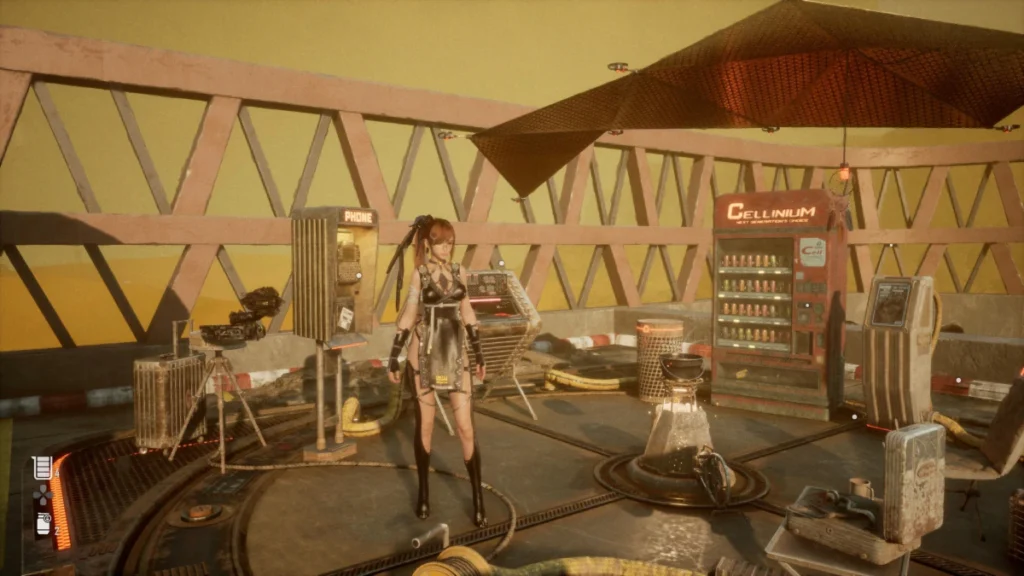
Stellar Blade shines in the visual department in general, too. Even if there’s little personality to the art design, there’s a staggering amount of polish to everything on screen. The game’s representation of a post-apocalyptic planet is rarely fresh, and you can see it borrowing ideas from different forms of media that have come before. But it all looks so good! Walking through ruined city blocks and dimly lit, dilapidated interiors is an immersive experience. And Stellar Blade also often pauses at certain points to let you admire the apocalypse, presenting stunning vistas of a devastated planet. The linearity of the game, too, lends itself to the graphical fidelity seen across levels, each of which brings a distinct aesthetic.
Stellar Blade is not an open-world game, but it does open up after the first act of the story when you reach the last surviving human settlement of Xion. Here, the game lets you indulge in some dull and repetitive side quests and presents, for the first time, a map of the open section to let you explore the city and its surrounding wilderness. It’s telling, but not surprising, that this open area feels lacklustre compared to the more compelling visual aesthetics and design of the linear levels. Stellar Blade is a PS5 exclusive and the performance on the console remained consistent for me, with expected framerate dips in demanding sections. It would, however, be an ideal candidate for a PC port down the line, with its slick graphical presentation an ideal fit for the platform.
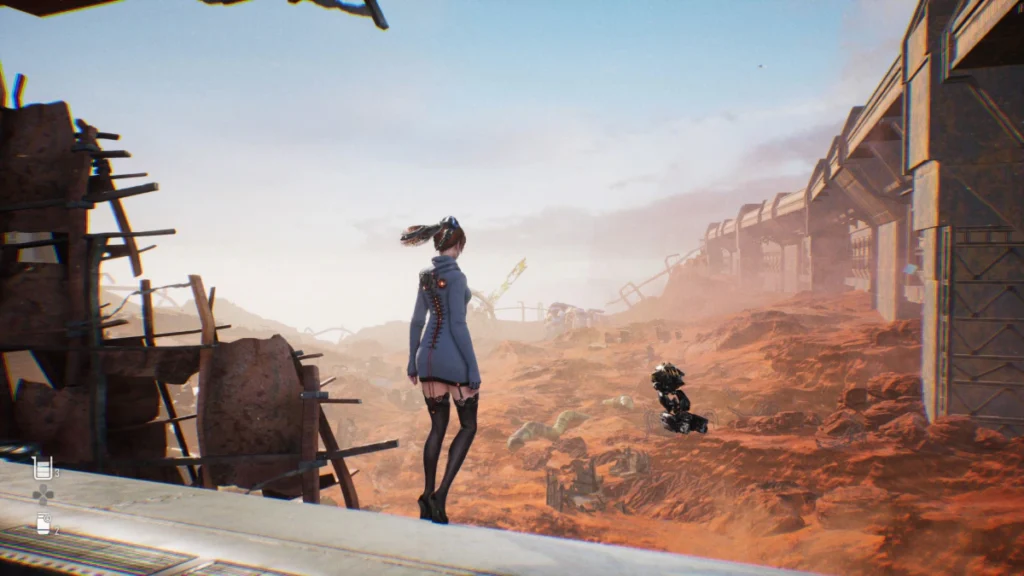
When it comes to action-adventure titles that put their combat systems in the spotlight, Stellar Blade has entered a very competitive field. By de-emphasising narrative, characters and ancillary gameplay features, it attempts to go toe-to-toe with games that focus on real-time melee combat. But it also pales in comparison to action-heavy games like Devil May Cry, Bayonetta, Nier, and Final Fantasy. And it doesn’t help Shift Up’s cause that these titles also bring more than just fun hack-and-slash combat to the table.
DMC and Bayonetta games have always had a distinct personality, and Final Fantasy, despite leaning towards real-time action combat in recent titles, has always placed its strong characters, meaningful RPG systems and sprawling stories front and centre. Stellar Blade doesn’t do that. Shift Up has also clearly tried to appeal to a certain sensibility with its lead character design. However, a protagonist provocative on the surface, but completely unremarkable in every other layer beneath can only carry the allure so far. Eventually, Stellar Blade is held up by its fun combat and slick presentation, but it’s consistently held back by almost everything else.
Pros
- Fun and flowing combat
- Slick visual presentation
- Excellent music
- Engaging boss fights
- Camps!
Cons
- Weak story and characters
- Overtly sexualised character design
- Lack of meaningful side content
- Repetitive encounters
Rating (out of 10): 7
Stellar Blade released April 26 exclusively on PS5
Pricing starts at Rs. 4,999 for the Standard Edition on PlayStation Store for PS5.

Stellar Blade
Entertainment
Bungie Reiterates Commitment to Destiny After Layoffs, Says Will Reveal Future of Franchise Soon
Published
8 months agoon
August 20, 2024

Destiny maker Bungie announced last week that it was laying off 220 employees and making structural changes as part of cost-cutting measures. The studio cited rising development costs and grim economic environment as factors behind its decision. Now, Bungie has sought to reassure players over its commitment to Destiny and has said that it will soon share its plans for the future of the franchise.
‘Future of Destiny’
In a post on X via the Destiny 2 team account on Friday, Bungie reiterated its commitment to its popular online shooter, Destiny, and said that it would continue issuing regular updates about the game to the playerbase.
“We know that recent changes at Bungie have created uncertainty surrounding the future of Destiny,” the post read. “Rest assured we remain committed to Destiny, to supporting our community with transparency, and to delivering regular updates about the game.”
We know that recent changes at Bungie have created uncertainty surrounding the future of Destiny.
Rest assured we remain committed to Destiny, to supporting our community with transparency, and to delivering regular updates about the game.— Destiny 2 Team (@Destiny2Team) August 8, 2024
The developer confirmed that the Destiny wasn’t over, and it would reveal its plans for the “future of Destiny” and the franchise’s next “multi-year journey” soon. “Once we plant a flag for the date, we’ll let you all know,” the studio added.
Bungie Layoffs
The latest update from Bungie comes days after the studio made major changes to organisational structure, cutting 220 roles at the company — about 17 percent of its total workforce. In a blog post on the Bungie website July 31, studio CEO Pete Parsons claimed that the company needed to make “substantial changes” to its cost structure and “focus development efforts entirely on Destiny and Marathon.” The layoffs affected the company across all levels of hierarchy, including most of its executive and senior leader roles.
Additionally, Parsons also announced major changes to the studio that would deepen its integration with Sony — this includes the PlayStation parent absorbing 155 roles at Bungie into Sony Interactive Entertainment (SIE) over the coming quarters. Bungie and Sony will also form a new studio within PlayStation Studios to work on an unannounced action game set in a brand-new science-fantasy universe.

ChatGPT: Here’s All You Need to Know About the AI Chatbot

GPT4 game changer features in 2024

ICANN Reserves ‘.internal’ Domain for Private Use—Here’s Why

ChatGPT: Here’s All You Need to Know About the AI Chatbot
Senua’s Saga: Hellblade II Review: Ninja Theory’s Flawed, but Uncompromising Sequel Is a Cinematic Achievement
How to Use Twitter’s New Bitcoin Tipping Feature
Trending
-

 Business7 months ago
Business7 months agoChatGPT: Here’s All You Need to Know About the AI Chatbot
-
Entertainment8 months ago
Senua’s Saga: Hellblade II Review: Ninja Theory’s Flawed, but Uncompromising Sequel Is a Cinematic Achievement
-
Cryptocurrency8 months ago
How to Use Twitter’s New Bitcoin Tipping Feature
-
Business8 months ago
Database Admins See Brighter Job Prospects Amid IT Challenges
-
Business8 months ago
Bitcoin Price Crosses $61,000, Most Altcoins See Profits as Market Shows Signs of Stabilisation
-
How-To8 months ago
How to Add Links to Your Instagram Stories
-
Computer8 months ago
How to Enable Chrome Dark Mode on Android, iPhone, Windows, Mac
-
Entertainment8 months ago
Lenovo Legion Go Review: Best Windows Handheld?
-

 Computer7 months ago
Computer7 months agoIs a ChatGPT Plus subscription worth it?
-

 Business7 months ago
Business7 months agoGPT4 game changer features in 2024
-
Artificial Intelligence (AI)8 months ago
How to avoid online scams and what to do if you become a victim
-
Business8 months ago
How to Check ITR Filing – IT Return Status Online
